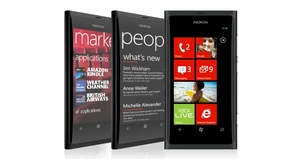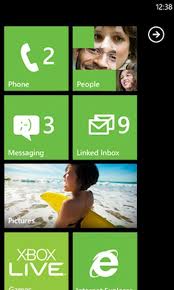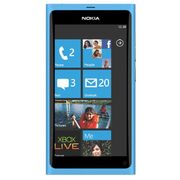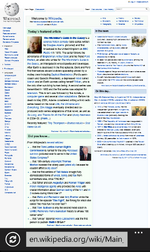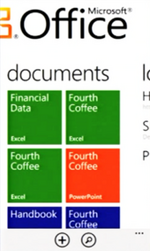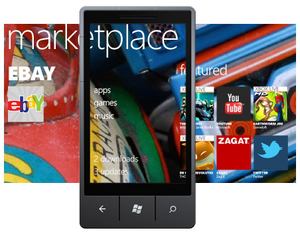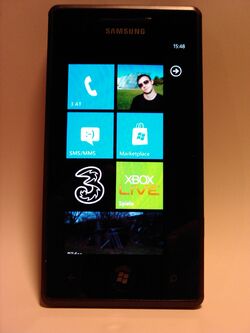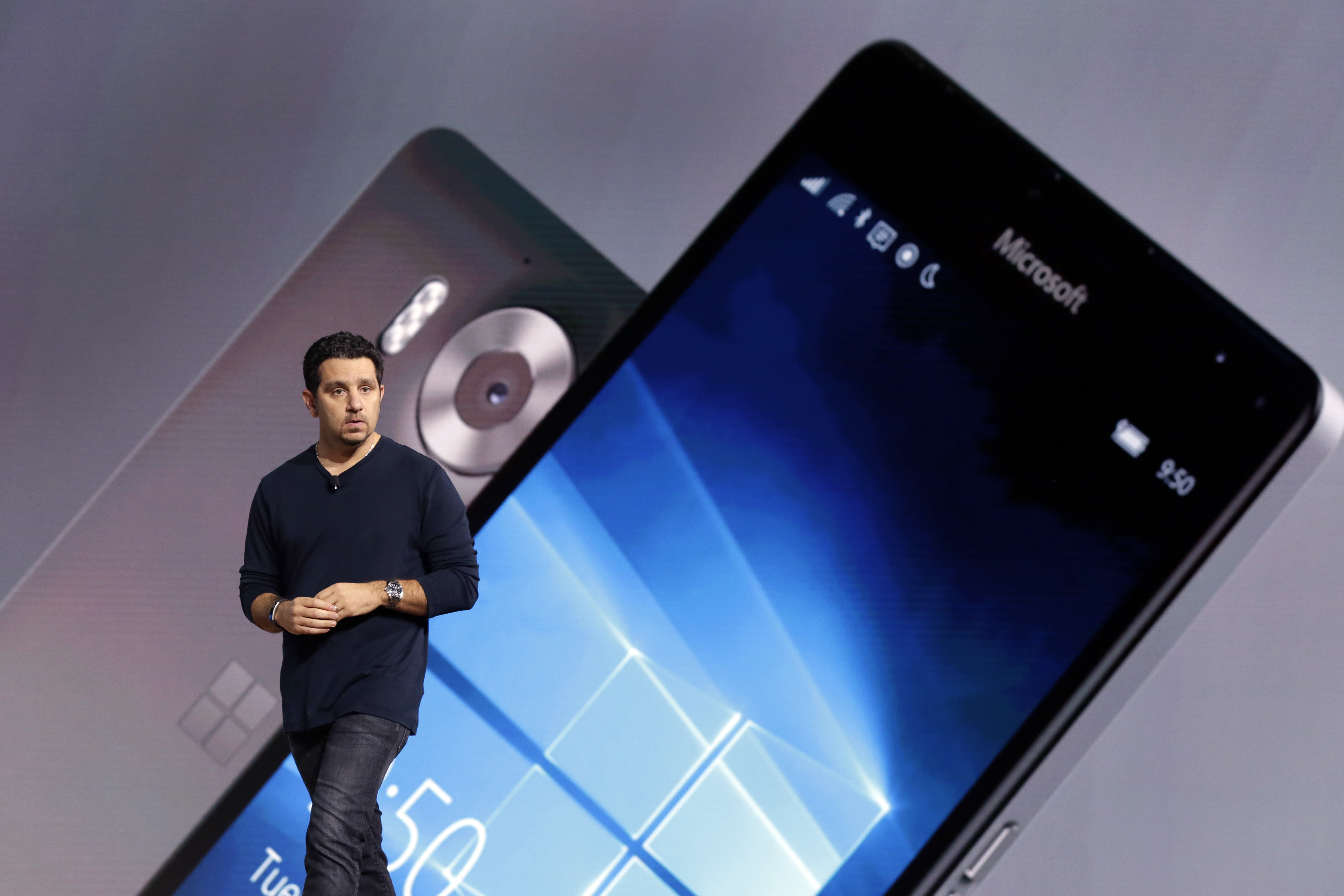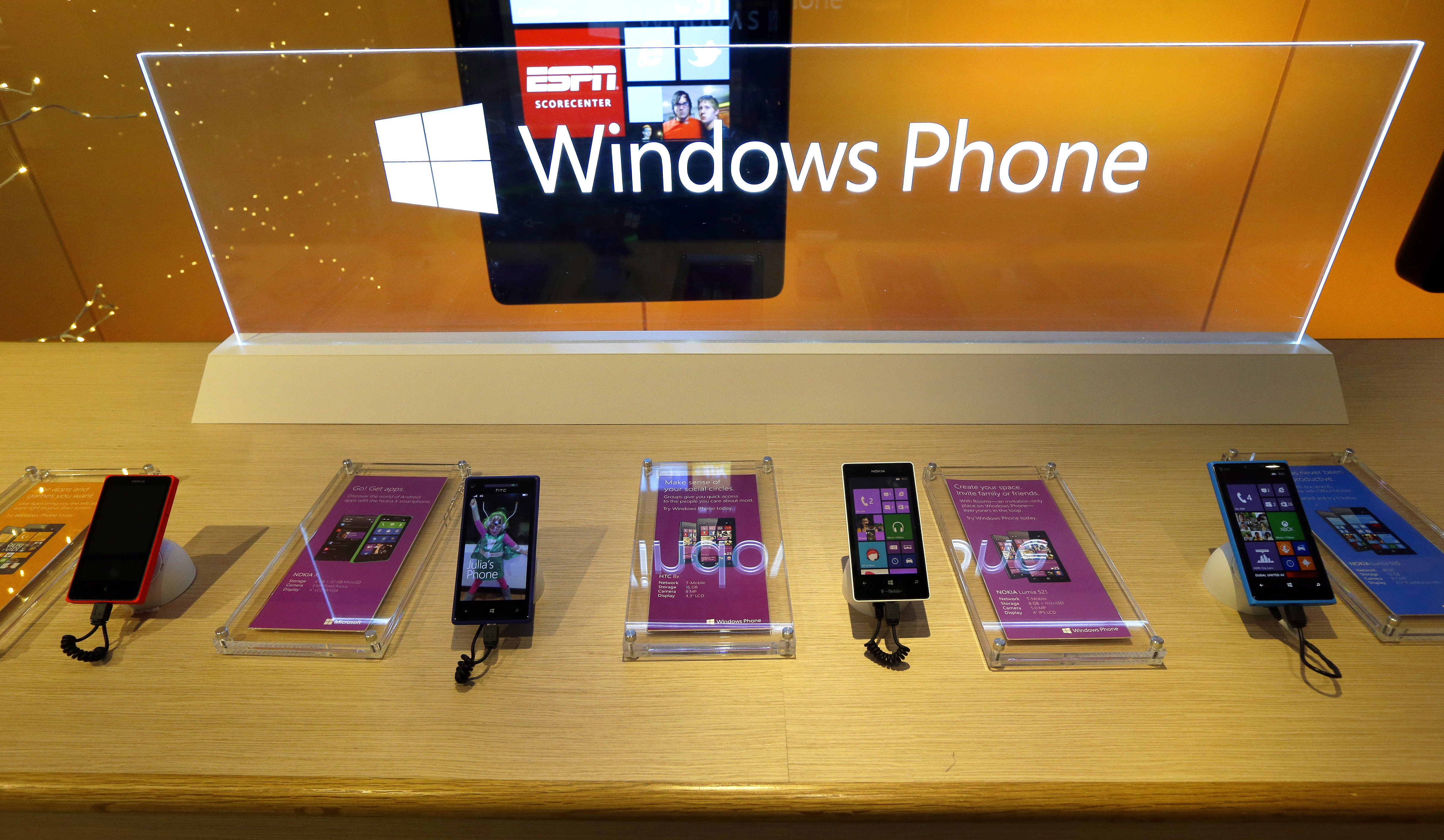На днях ко мне в руки попал Nokia Lumia 630 — старейший смартфон, который работает на Windows Phone 8.1. Пользовался им неделю и понял, что Windows Phone во многом опережала конкурентов (Android и iOS), но вышла слишком поздно из-за чего не смогла покорить рынок.
Мобильная система от Microsoft давно канула в лету: смартфоны на ней не выпускаются последние четыре года. Забегая наперёд, скажу, что пользоваться ей в наше время невозможно.
Тем не менее, Windows Phone не растеряла свой шарм, и ее отголоски можно найти даже в iPhone 12. В общем, обо всём по порядку.
Что не так с Windows Phone в 2021
Смартфоны Lumia до сих пор выглядят достойно.
Тут нужно ответить на главный вопрос: что такое смартфон для современного пользователя? В первую очередь — это сервисы. Каждый день я плачу при помощи смартфона, давно не ношу с собой пластиковые карты, вызываю такси, покупаю билеты, бронирую жильё и иногда даже работаю.
Речи о работе каких-то современных сервисов на Windows Phone в 2021 году даже не идёт.
В 2017 году исполнительный директор Microsoft Джо Бельфиор заявил о прекращении выпуска новых устройств на Windows 10 Mobile. Ещё через два года, в 2019, было объявлено о закрытии магазина приложений для Windows Phone 8.1, а также выпуска обновлений для Windows 10 Mobile. Смартфонам на Windows Phone 8 (впоследствии и 8.1) отключили работу сервера уведомлений.
Перспективы у платформы были.
Напомню, Windows Phone — закрытая операционная система, которая не поддерживает установку приложений в обход магазина приложений Microsoft. Назовите любое приложение — его сюда не установить. Даже банально Telegram или WhatsApp. Да и смысл от этого всего теряется, потому что узнавать о новых оповещениях вы не сможете.
У меня дома много старых гаджетов, и могу сказать, что никто, ни Google, ни уж тем более Apple так не ограничивает своих пользователей. Периодически залипаю в iPhone 4s на iOS 6, там у меня стоит Telegram, ВКонтакте, электронная почта, и им я, в принципе, могу пользоваться.
Если захочется установить какое-то приложение из App Store, то на смартфон просто загрузится его старая версия. Нет «законсервированности», которая есть в Windows Phone.
Откуда взялась Windows Phone
iPhone стал убийцей КПК.
Microsoft громко вошла на рынок КПК и смартфонов ещё в 2000 году, задолго до Android и iPhone. Тогда у «майков» была Windows Mobile. Слишком замудренная операционная система, оптимизированная под управление стилусом. Не слукавлю, если скажу, что WM была неким аналогом Android для того времени.
Куча софта и безграничные возможности кастомизации сделали её довольно популярной. Но с выходом iPhone понятие смартфона изменилось: отныне пользователи хотели видеть устройство с интуитивно понятным интерфейсом, которым удобно пользоваться одной рукой.
Чувствуется выдержанность стиля.
Превратить в нечто похожее Windows Mobile было нереально, поэтому Microsoft в 2010 году полностью перекроили привычную многим операционную систему. Теперь интерфейс приобрёл минималистичный стиль с большими заголовками и крупными значками. Оболочку назвали «Metro», в ней использовали наработки интерфейса от Xbox и плеера Zune.
Также был запущен многострадальный магазин приложений Microsoft Store. Компания не смогла толком договориться с разработчиками, поэтому хороших приложений в нем можно по пальцам сосчитать.
Тем не менее, эту платформу любили во многом за авангардность. Она была закрытой, имела хорошую оптимизацию, поэтому система летала даже на откровенно бюджетных смартфонах. Но самое главное, Windows Phone во многом опередила время.
1. Тёмная тема
Тёмный фон не отвлекает от контента.
Пока интерфейсы Android и iOS использовали светлые подложки, Microsoft решила в 2010 году опередить индустрию на несколько лет вперёд и добавить в систему тёмную тему. Интерфейс отлично чувствовал себя на смартфонах с AMOLED-экранами, которых в то время становилось все больше и больше.
Причём тёмная тема была не отдельной опцией, а стандартной настройкой системы. Смотрелось в те времена это непривычно: когда у меня была Nokia Lumia, я даж включал светлое оформление.
2. Интерактивные виджеты-значки на рабочем столе
Одно из лучших воплощений рабочего стола. ИМХО.
Пока Android использовал на рабочем столе абсолютно страшные и разрозненные по стилю виджеты, а в iOS их вообще не было, Phone имела самый стильный, на мой взгляд, рабочий стол. Microsoft решила не идти по пути клише существовавших тогда операционных систем, а придумала новое решение.
Каждый значок приложения на рабочем столе был интерактивным и демонстрировал какую-то информацию. Будь то погода, сообщения, новости или фотографии. Всё это сопровождалось очень приятной анимацией.
Согласитесь, такой интерфейс выглядел абсолютно уникально. Покажи такой экран в наше время, и его ни с чем не спутаешь.
А теперь вспомните рабочий стол iOS 14 и iOS 15. Согласитесь, есть между ними что-то общее.
3. Вирусов не было, хоть это и Windows
Это вам не Android.
Windows Phone, как я уже говорил выше, была закрытой системой. Во многом она напоминала iOS, как минимум в безопасности. С учётом того, что приложения можно было загружать строго из Microsoft Store, подхватить какой-нибудь вирус было невозможно.
К тому же, весь софт работал в своей «песочнице», и никак не мог взаимодействовать с системными ресурсами. Опять же, привет iOS! На фоне Android Windows Phone была островком спокойствия.
Так что, те люди, которые нуждались в надёжной защите своих данных, но не могли позволить себе iPhone, покупали себе HTC или Nokia с Windows Phone и не парились.
4. Экосистема
В устройствах на Windows действительно была преемственность дизайна.
Во-первых, в Windows 8.1 (и Phone 8.1) Microsoft замахнулась на реализацию общего магазина приложений для компьютеров, планшетов и смартфонов. Приложения, которые вы могли установить на свой телефон, можно было установить и на другие устройства. Похожим образом недавно начал работать App Store с Mac M1.
Во-вторых, в платформу был глубоко интегрирован сервис OneDrive (раньше он назывался SkyDrive). Файлы с рабочего стола компьютера можно было синхронизировать с облачным хранилищем и просматривать их с других устройств.
Впоследствии аналогичная реализация появилась в iCloud Drive. Это я ещё не говорю об автоматической синхронизации всех фотографий и видео. Всё работало как надо.
В свое время хотел себе ноутбук-трансформер. Сейчас понимаю, что это не нужно.
Также синхронизировались данные между приложениями. Если вы начали писать текст в Word на компьютере, его можно быстро продолжить писать на смартфоне или другом компьютере. Ну и аналогично с заметками, таблицами и так далее.
В-третьих, система синхронизировала настройки персонализации. При желании можно было включить опцию, с которой цветовая палитра системы становилась общей для всех гаджетов. То есть, если вы сделаете плитки синими на смартфоне, они станут синими и на компьютере.
5. Огромные возможности для фото
Были даже специальные камерафоны. Слева: Nokia Lumia 1020 с камерой 41 МП.
Смартфоны на Windows Phone были, пожалуй, лучшими камерофонами. Тут отдельное спасибо нужно сказать Nokia, которые разрабатывали кастомное приложение Lumia Камера (впоследствии оно стало стандартным).
Выверенные алгоритмы и ручные настройки позволяли делать фотошедевры даже на бюджетные смартфоны с камерой 5 МП. На них можно было делать даже астрофото! Ночной режим, разумеется, тоже был.
Почему Windows Phone канула в лету
К тому же, в последние годы жизни Windows Phone Microsoft зачем-то начала целиться в коммерческий сектор. Нужно было делать акцент на массового потребителя.
Однозначного ответа на этот вопрос нет. Кто-то считает «не повезло», но на самом деле это результат множества факторов. Во-первых, Windows Phone имела крайне ограниченный магазин приложений.
К 2010 году на рынке устоялись два кита — Android и iOS. Разработчики неохотно оптимизировали свои приложения под новую платформу, потому что Windows Phone использовала другой API, а на это нужно было много времени и денег.
А зачем тратить время и деньги на оптимизацию приложений для платформы, которой пользуются два с половиной землекопа? Владельцев WP-смартфонов было очень мало на фоне Android и iPhone.
На Windows Phone очень долго не было Instagram.
Выходит замкнутый круг: разработчики не выпускали свои приложения из-за малого числа пользователей, при этом потребители не хотели переходить на эту платформу из-за малого числа приложений.
Так что, можно сказать — Windows Phone просто вышла слишком поздно. Если бы Microsoft представила новую операционную систему раньше, а не выдавливала последние соки из Windows Mobile, история могла обернуться совершенно иначе.
А сегодня это просто кусочек истории мобильных технологий. Кто знает, может Microsoft ещё сможет нас удивить.

🤓 Хочешь больше? Подпишись на наш Telegram.

iPhones.ru
Её отголоски есть даже в iOS 15.
- windows,
- Обзоры,
- смартфоны,
- Это интересно
Василий Шкодник
@podogreykin
Главный любитель технологий и Звёздных воин в галактике. До сих пор слушаю музыку с iPod.
Есть вопрос или замечание: [email protected]
From Wikipedia, the free encyclopedia
This page provides details for the version history of the Microsoft’s Windows Phone branded mobile operating systems, from the release of Windows Phone 7 in October 2010, which was preceded by Windows Mobile version 6.x.
Windows Phone 7[edit]
Windows Phone 7 was the first release of the Windows Phone mobile client operating system, released worldwide on October 21, 2010, and in the United States on November 8, 2010.
Table of versions[edit]
| Table of versions: Windows Phone 7 | ||
|---|---|---|
| Version | Release date | Changes |
| 7.0.7004 | October 29, 2010 |
|
| 7.0.7008 | 2010 |
|
| 7.0.7390 (NoDo) | March 22, 2011[1] |
|
| 7.0.7392 | 2011 |
|
| 7.0.7403 | 2011 |
|
| Version | Release date | Changes |
Windows Phone 7.5 (Mango) [edit]
At the 2011 Mobile World Congress, Steve Ballmer announced a major update to Windows Phone 7 due toward the end of the year, Windows Phone 7.5, codenamed Mango.[2] The new OS would address many of the platform’s shortcomings, including a mobile version of Internet Explorer 9 that supports the same web standards and graphical capability as the desktop version, multi-tasking of third-party apps,[3][4] Twitter integration for the People Hub,[5][6][7] and Windows Live SkyDrive access.[8] Although the OS internally identifies itself as version 7.1, it is marketed as version 7.5 in all published materials intended for end-users.[9][10]
Microsoft started rolling out Windows Phone 7.5 to both the United States[11] and International[12] markets on September 27, 2011. The first phones that came pre-loaded with Windows Phone 7.5 were released in the last quarter of 2011.
A minor update released in 2012 known as Tango, along with other bug fixes, would also lower the hardware requirements to allow for devices with 800 MHz CPUs and 256 MB of RAM to run Windows Phone. Certain resource-intensive features are also disabled on these phones, and the Windows Phone Store will also prevent the installation of apps that are considered to be too intensive for use on weaker hardware.[13] The lower requirements were adopted in order to allow the development of lower-cost devices, particularly to target emerging markets such as China.[14]
Table of versions[edit]
| Table of versions: Windows Phone 7.5 | ||
|---|---|---|
| Version | Release date | Changes |
| 7.10.7720 (Mango) | September 27, 2011 |
|
| 7.10.7740 | 2011 |
|
| 7.10.8107 (Refresh) | 2011 |
|
| 7.10.8112 | 2012 |
|
| 7.10.8773.98 (Tango) | June 28, 2012 |
Also confirmed are 23 additional markets[35] including; Bahrain, Bulgaria, China, Costa Rica, Croatia, Estonia, Iceland, Iraq, Israel, Kazakhstan, Latvia, Lithuania, Qatar, Romania, Saudi Arabia, Slovakia, Slovenia, Thailand, Turkey, UAE, Ukraine, Venezuela and Vietnam. This update will also include a Skype application. |
| 7.10.8779.8 |
|
|
| 7.10.8783.12 |
|
|
| Version | Release date | Changes |
Windows Phone 7.8[edit]
Windows Phone 7.8 is the final major release of Windows Phone 7. It consists exclusively of user interface improvements backported from Windows Phone 8, as existing Windows Phone 7 devices can not be upgraded to due to changes to its architecture and hardware requirements. These include a home screen with the ability to resize live tiles, new accent color options, and an updated lock screen with support for Bing wallpapers. Unlike Windows Phone 8, the lock screen does not allow third-party apps to display notifications on it.[37][38]
Table of versions[edit]
| Table of versions: Windows Phone 7.8 | ||
|---|---|---|
| Version | Release date | Changes |
| 7.10.8858.136 | February 1–2, 2013 |
|
| 7.10.8860.142 | March 14, 2013 |
|
| 7.10.8862.144 | March 14, 2013 |
|
| Version | Release date | Changes |
Windows Phone 8[edit]
GDR1[edit]
General Distribution Release 1, a minor update known as Portico was rolled out in December 2012 that brought some improvements and bugfixes, including enhancements in Messaging, more efficient Bluetooth connectivity, and an «always-on» setting for WiFi connections, among other additional platform updates
GDR2[edit]
Microsoft rolled out a package of minor updates called General Distribution Release 2, beginning in July 2013 and spanning the following months, depending on the manufacturer and carrier. Along with this update Nokia released its own update which updated the firmware of the user, namely Lumia Amber, which was available for only Lumia phones. The update brought many camera improvements and fixed some bugs in the cameras of existing Lumia phones.
GDR3[edit]
On October 14, 2013, Microsoft released the third General Distribution Release update for Windows Phone 8, which would roll out to phones over the following months. Windows Phone Developers were among the first to receive the update under a new Developer Preview Program.
Table of versions[edit]
| Table of versions: Windows Phone 8 | ||
|---|---|---|
| Version | Release date | Highlights |
| 8.0.9903.10 (Apollo) |
October 29, 2012 |
|
| 8.0.10211.204 (GDR1) |
December 11, 2012 |
|
| 8.0.10327.77
8.0.10328.78 |
July 12, 2013 |
|
| 8.0.10512.142 8.0.10501.127 8.0.10517.150 8.0.10521.155 (GDR3) [41][42] |
October 14, 2013[43] |
|
| 8.0.10532.166 | April 14, 2014 |
|
| Version | Release date | Highlights |
Windows Phone 8.1[edit]
GDR1[edit]
General Distribution Release 1 (GDR1; also referred to as Update 1) adds new language and region support for Cortana, the option to organize apps into folders on the Start Screen, SMS forwarding of multiple messages, improvements to Xbox Music, a live tile for the Windows Phone Store and an option for sandboxing applications. In addition, Update 1/GDR1 also includes new VPN and Bluetooth features for enterprise users, as well as support for interactive cases such as HTC’s «Dot View» case, larger «phablet» screen resolutions such as 1280×800, 540×960 qHD and 1280×768 and the Qualcomm QuickCharge 2.0 standard.[44][45]
Microsoft has made several changes to Internet Explorer Mobile that brings the browser experience closer in line with the experiences on Safari (iOS) and Chrome (Android). To accomplish this, Microsoft moved away from open standards and adopted non-standard features used in Safari and Chrome, implemented browser detection, improved page rendering by detecting legacy WebKit features, brought support for HTML5, and fixed interoperability issues with bad HTML code.[46]
- IE11 on Windows Phone 8.1:
Mozilla/5.0 (Windows Phone 8.1; ARM; Trident/7.0; Touch; rv:11; IEMobile/11.0; NOKIA; Lumia 928) like Gecko
- IE11 on Windows Phone 8.1 with Update 1/GDR1:
Mozilla/5.0 (Mobile; Windows Phone 8.1; Android 4.0; ARM; Trident/7.0; Touch; rv:11.0; IEMobile/11.0; NOKIA; Lumia 720) like iPhone OS 7_0_3 Mac OS X AppleWebKit/537 (KHTML, like Gecko) Mobile Safari/537
GDR2[edit]
Information regarding GDR2 (also referred to as Update 2) was released in February 2015 it was revealed that Microsoft was working on a 2nd update for Windows Phone 8.1 that would provide increased security for OEM’s, add extra languages and additional technology support and is also reported to bring an anti-theft mode.[49]
Table of versions[edit]
| Table of versions: Windows Phone 8.1 | ||
|---|---|---|
| Version | Release date | Highlights |
| 8.10.12359.845 (Blue) |
April 14, 2014 | User Interface
General user experience changes
New technology support
Internet Explorer 11
Apps
System
Enterprise
Developer features
|
| 8.10.12382.878 | May 14, 2014 |
|
| 8.10.12393.890 | June 2, 2014 |
|
| 8.10.12397.895 | June 12, 2014 |
|
| 8.10.12400.899 | July 16, 2014 | |
| 8.10.14141.167 | ||
| 8.10.14147.180 (GDR1) [54][55] |
August 4, 2014 | Apps
General user experience changes
New technology support
Enterprise
OEM
|
| 8.10.14157.200 | August 19, 2014 |
|
| 8.10.14176.243 | September 24, 2014 |
|
| 8.10.14192.280 | October 24, 2014 |
|
| 8.10.14203.306 | November 13, 2014 |
|
| 8.10.14219.341 | December 5, 2014 |
|
| 8.10.14226.359 | December 24, 2014 |
|
| 8.10.14234.375 | February 24, 2015 |
|
| 8.10.15116.125 (GDR2) [57] |
March 2, 2015 | General user experience changes
New technology support[61]
Security features
|
| 8.10.15127.138 | March 2015 |
|
| 8.10.15135.146 | March 2015 | |
| 8.10.15137.148 | March 2015 | |
| 8.10.15143.154 | April 2015 | |
| 8.10.15145.156 | April 2015 | |
| 8.10.15148.160 | May 2015 |
|
| 8.10.15153.165 | June 2015 | |
| 8.10.15155.167 | July 2015 | |
| 8.10.15156.168 | January 2016 | |
| 8.10.15165.177 | August 2016 | |
| 8.10.15172.184 | March 2017 |
|
| 8.10.15176.188 | December 2017 |
|
| 8.10.15185.197 | November 2018 |
|
| 8.10.15191.203 | June 2019 |
|
| Version | Release date | Highlights |
Windows 10 Mobile[edit]
Windows 10 Mobile was announced on January 21, 2015, as a mobile operating system for smartphones and tablets with screens smaller than 8 inches, with the first build released on February 12, 2015.[66] It is the successor to Windows Phone 8.1[67] and replaced the Windows Phone brand, while Microsoft has since ceased active development of Windows 10 Mobile. Windows Phone 8.1 devices were eligible for upgrade to Windows 10, pursuant of manufacturer and carrier support.[68] Some features may have varied depending on hardware compatibility.[69]
See also[edit]
- Android version history
- BlackBerry 10 version history
- Firefox OS version history
- iOS version history
- Palm OS version history
- Sailfish OS version history
- Symbian version history
- Tizen version history
References[edit]
- ^ Warren, Tom. «Windows Phone 7 «NoDo» update now available». WinRumors. Archived from the original on July 25, 2014. Retrieved April 5, 2014.
- ^ Shankland, Stephen (February 15, 2011). «Windows Phone 7 update to offer IE9». ZDNet. CBS Interactive. Archived from the original on October 15, 2011. Retrieved March 24, 2011.
- ^ Stevens, Tim (February 14, 2011). «Windows Phone 7’s multitasking uses zoomed-out cards to check on your apps». Engadget. AOL. Archived from the original on February 17, 2011. Retrieved March 24, 2011.
- ^ Cha, Bonnie (February 14, 2011). «Multitasking, IE9 coming to Windows Phone». CNET. CBS Interactive. Archived from the original on April 26, 2012. Retrieved March 24, 2011.
- ^ Bright, Peter (February 14, 2011). «Windows Phone 7’s future revealed: multitasking, IE9, Twitter». Ars Technica. Condé Nast Digital. Archived from the original on October 18, 2011. Retrieved October 27, 2011.
- ^ Mathews, Lee (February 14, 2011). «Windows Phone 7 update to bring Twitter and SkyDrive integration, webOS style multitasking». Switched. AOL. Archived from the original on July 7, 2012. Retrieved October 27, 2011.
- ^ Stevens, Tim (February 14, 2011). «Windows Phone 7’s multitasking uses zoomed-out cards to check on your apps». Engadget. AOL. Archived from the original on February 17, 2011. Retrieved March 24, 2011.
- ^ Ponder, George (February 14, 2011). «New features heading to Windows Phone 7: Multi-tasking, IE9, Skydrive and more». WPCentral.com. Mobile Nations. Archived from the original on January 6, 2012. Retrieved October 27, 2011.
- ^ Devereux, William (July 27, 2011). «Windows Phone Mango officially branded 7.1, marketed as 7.5». Anything But iPhone. Archived from the original on October 16, 2011. Retrieved August 23, 2011.
- ^ Foley, Mary Jo (July 27, 2011). «Microsoft gives Windows Phone developers a refreshed (non-RTM) Mango build». ZDNet. Archived from the original on October 2, 2011. Retrieved August 23, 2011.
- ^ «The Smartphone Reinvented Around You — Windows Phone (USA)». microsoft.com. Microsoft. Archived from the original on September 30, 2011. Retrieved April 18, 2012.
- ^ «The Smartphone Reinvented Around You — Windows Phone (United States)». microsoft.com. Microsoft. Archived from the original on August 2, 2012. Retrieved April 18, 2012.
- ^ Warren, Tom (March 8, 2012). «Microsoft details full Windows Phone ‘Tango’ 256MB RAM device limitations». The Verge. Vox Media. Archived from the original on July 1, 2012. Retrieved June 20, 2012.
- ^ Warren, Tom (February 27, 2012). «Windows Phone 7.5 update will support 256MB RAM and slower processors in April». The Verge. Vox Media. Archived from the original on July 5, 2012. Retrieved June 21, 2012.
- ^ Miller, Matthew (June 20, 2011). «Hands-on with Windows Phone 7.5 Mango technical preview». zdNet. Archived from the original on June 23, 2011. Retrieved June 21, 2011.
- ^ Adhikari, Richard (May 24, 2011). «WP7 Visual Voicemail». TechNewsWorld. Archived from the original on March 18, 2012. Retrieved June 14, 2011.
- ^ Devereux, William (May 24, 2011). «Bing on Windows Phone Mango Revolutionizes Mobile Search». Anything but iPhone. Archived from the original on February 16, 2015. Retrieved February 15, 2015.
- ^ Nguyen, Vincent (June 20, 2011). «Windows Phone 7.1 Mango Technical Preview». SlashGear. Archived from the original on June 22, 2011. Retrieved June 21, 2011.
- ^ Lein, Adam Z (August 28, 2011). «Why Windows Phone Mango Can’t Edit Older Office Documents». Pocketnow. Archived from the original on January 26, 2012. Retrieved May 4, 2012.
- ^ a b c d e f g h i j k «What’s new in Pictures + Camera for Mango». Archived from the original on May 5, 2012. Retrieved April 18, 2012.
- ^ Toor, Amar (August 25, 2011). «Microsoft: front facing cameras, Skype integration coming with Mango update». Engadget. Archived from the original on September 25, 2011. Retrieved August 25, 2011.
- ^ Cha, Bonnie; Dolcourt, Jessica (June 20, 2011). «Hands-on with Windows Phone 7.5 Mango technical preview». cNet. Retrieved June 21, 2011.
- ^ Bishop, Todd (August 17, 2011). «Windows Phone games: Details on Microsoft’s ‘Fast Async’ service — GeekWire». GeekWire. Archived from the original on March 24, 2012. Retrieved April 18, 2012.
- ^ «Is Find on Page feature being removed from IE9 Mango?!». microsoft.com. Microsoft. Archived from the original on March 22, 2012. Retrieved April 18, 2012.
- ^ Buckley, Sean (August 24, 2011). «Mango teaches Windows Phone to share, probably still needs carrier permission». Engadget. Archived from the original on September 25, 2011. Retrieved August 24, 2011.
- ^ Lein, Adam Z (June 21, 2011). «The Ultimate Windows Phone 7.5 Mango Preview». PocketNow. Archived from the original on June 23, 2011. Retrieved June 23, 2011.
- ^ «Samsung Focus Alarm Now Too Loud?». October 5, 2011. Archived from the original on October 15, 2011. Retrieved October 26, 2011.
- ^ «Mango Changed my Alarm Snooze interval???». October 17, 2011. Archived from the original on February 27, 2012. Retrieved October 26, 2011.
- ^ «Additions in the Windows Phone SDK 7.1». Msdn.microsoft.com. March 23, 2012. Archived from the original on May 10, 2012. Retrieved May 30, 2012.
- ^ Warren, Tom (November 17, 2011). «Windows Phone Update». winrumors. Archived from the original on November 19, 2011. Retrieved November 17, 2011.
- ^ Warren, Tom (January 4, 2012). «Windows Phone update rolling out, fixes disappearing keyboard and location privacy bugs». The Verge. Archived from the original on January 8, 2012. Retrieved January 4, 2012.
- ^ Rubino, Daniel (April 2012). «Nokia readies Lumia 710 Mango OS update for China». WPcentral.[permanent dead link]
- ^ a b Rubino, Daniel (July 2012). «Some new undocumented features of Windows Phone mango». WPcentral.[permanent dead link]
- ^ Ajgekar, Aviraj (May 2012). «HTC Mozart: Windows Phone Update from 7.10.8107 to 7.10.8112.7 to 7.10.8773.98 to 7.10.8779.8 !!». Aviraj Ajgekar Blog.
- ^ Belfiore, Joe (February 2012). «Get Ready for 60% More Potential Customers». Microsoft. Archived from the original on June 26, 2012. Retrieved April 18, 2012.
- ^ Myerson, Terry (February 2012). «Windows Phone at Mobile World Congress 2012». Microsoft. Archived from the original on April 15, 2012. Retrieved April 18, 2012.
- ^ «Windows Phone 7.8 hands-on: cosmetically yours». Engadget. Retrieved November 26, 2022.
- ^ Welch, Chris (November 28, 2012). «Microsoft says Windows Phone 7.8 update coming in ‘early 2013’«. The Verge. Retrieved November 26, 2022.
- ^ a b «Windows Phone 7.8 Problems: Data-Draining Live Tiles, Lumia Audio Issues | Pocketnow». Archived from the original on February 8, 2013. Retrieved February 5, 2013.
- ^ «Windows Phone 8 update history». Microsoft. Archived from the original on December 30, 2012. Retrieved December 20, 2012.
- ^ a b «Windows Phone 8 update history». windowsphone.com. Windows Phone How-to (United States). Archived from the original on December 30, 2012. Retrieved December 20, 2012.
- ^ «Introducing Windows Phone Preview for Developers». Building Apps for Windows. Archived from the original on October 15, 2013. Retrieved October 14, 2013.
- ^ «Announcing our third Windows Phone 8 update—plus a new developer preview program». Blogging Windows. Archived from the original on October 17, 2013. Retrieved October 14, 2013.
- ^ Rubino, Daniel (July 30, 2014). «Microsoft reveals Update 1/GDR1 for Windows Phone 8.1, due next week for Preview users | Windows Phone Central». Wpcentral.com. Archived from the original on August 25, 2014. Retrieved August 21, 2014.
- ^ Belfiore, Joe (July 30, 2014). «Windows Phone 8.1 Update brings Cortana to new markets + new featuresBlogging Windows». Blogs.windows.com. Archived from the original on July 30, 2014. Retrieved August 21, 2014.
- ^ Thurrott, Paul (July 31, 2014). «Windows Phone 8.1 Update 1/GDR1: Internet Explorer | Windows Phone content from Paul Thurrott’s SuperSite for Windows». Winsupersite.com. Archived from the original on August 8, 2014. Retrieved August 21, 2014.
- ^ «The Mobile Web should just work for everyone». blogs.msdn.com. Microsoft. August 1, 2014. Archived from the original on August 4, 2014. Retrieved December 18, 2014.
- ^ «User-agent string changes». msdn.microsoft.com. Microsoft. Archived from the original on December 18, 2014. Retrieved December 18, 2014.
- ^ Surur, Suril (February 16, 2015). «Windows Phone 8.1 GDR2 goes to OEMs, may bring anti-theft mode». Windows Mobile PowerUser. Archived from the original on February 16, 2015. Retrieved February 15, 2015.
- ^ «Windows Phone 8.1 Review | Windows Phone Central». April 14, 2014. Archived from the original on April 18, 2014. Retrieved April 20, 2014.
- ^ «Cortana (yes!) and Many, Many Other Great Features coming in Windows Phone 8.1». Blogging Windows. Archived from the original on April 4, 2014. Retrieved April 20, 2014.
- ^ a b c «Windows Phone 8.1 Review | Windows Phone Central». April 14, 2014. Archived from the original on April 20, 2014. Retrieved April 20, 2014.
- ^ Molen, Brad. «Windows Phone 8.1 review: Microsoft’s mobile OS finally feels whole». Engadget. AOL. Archived from the original on July 24, 2017. Retrieved September 18, 2017.
- ^ «Windows Phone 8.1 Update brings Cortana to new markets + new features». Blogging Windows. Archived from the original on July 30, 2014. Retrieved July 30, 2014.
- ^ a b «2.9: Notification — Windows Phone Hardware Development». windowsphone.com. Archived from the original on August 26, 2014. Retrieved August 24, 2014.
- ^ «MSDN Blogs». msdn.com. Microsoft. Archived from the original on August 4, 2014. Retrieved July 31, 2014.
- ^ «Windows Phone 8.1 GDR2 — Windows Phone Hardware Development». windowsphone.com. Archived from the original on December 22, 2015. Retrieved December 12, 2015.
- ^ «Here is another unannounced Windows Phone 8.1 Update 2 feature — WMPoweruser». March 31, 2015. Archived from the original on April 2, 2015. Retrieved March 31, 2015.
- ^ «Settings gets a visual refresh in Windows Phone 8.1 Update 2 | Windows Central». March 2, 2015. Archived from the original on March 3, 2015. Retrieved March 2, 2015.
- ^ a b «Hands on with Windows Phone 8.1 Update 2». WMPoweruser. March 2, 2015. Archived from the original on March 4, 2015. Retrieved March 2, 2015.
- ^ «The Official Bluetooth SIG Member Website». bluetooth.org. Archived from the original on February 7, 2015. Retrieved February 15, 2015.
- ^ Rubino, Daniel (April 20, 2015). «Windows Phone 8.1 Update 2 also brings MKV video support». Windows Central. Archived from the original on April 28, 2015. Retrieved April 29, 2015.
- ^ «Reset protection | Windows Phone Hardware Development». Archived from the original on April 16, 2015. Retrieved April 8, 2015.
- ^ «Protect my Windows Phone | Windows Phone How-to (United States)». Archived from the original on May 11, 2015. Retrieved May 6, 2015.
- ^ «New software update for Lumia 640 & Lumia 640 XL: — Microsoft Community». Archived from the original on October 2, 2016. Retrieved September 28, 2016.
- ^ «Announcing the first build of Windows 10 Technical Preview for Phones». blog.windows.com. Gabe Aul. February 12, 2015. Archived from the original on February 13, 2015. Retrieved February 12, 2015.
- ^ «Windows Phone 10 to be called just Windows 10». GSMArena. Archived from the original on February 14, 2015. Retrieved February 11, 2015.
- ^ Bright, Peter (January 24, 2015). «Every Windows Phone 8 phone will get Windows 10, except the ones that won’t». Ars Technica. Archived from the original on July 8, 2017. Retrieved June 15, 2017.
- ^ «Yes, Windows 10 is Coming to Low-End Windows Phones». thurrot.com. Petri. February 9, 2015. Archived from the original on February 11, 2015. Retrieved February 11, 2015.
Выиграйте кроссовер FAW за покупки в приложении «Каталог Onlíner»
Провалы случаются у всех — как у начинающих компаний, так и у известных производителей. Иногда технологии, которые на первый взгляд кажутся прорывными, в реальной жизни таковыми не становятся. Но случается, что критике подвергается не определенная не сыскавшая популярности инновация, а целые продукты. Ниже — подробно о нескольких примерах, когда репутационные издержки заставляли производителей менять стратегии по разработке новых гаджетов на годы вперед. А иногда — и просто уходить с рынка.
В The Verge так кратко описывают провал целого направления в «смартфоностроении», основывающегося на ОС от Microsoft: «Компания потратила целые годы, тщетно пытаясь убедить разработчиков создавать приложения под Windows Phone, и в процессе разрушила Nokia. Сперва пришлось потратить $7,2 млрд на приобретение телефонного бизнеса этой компании, а после — списать покупку на неудачный эксперимент, попутно сократив тысячи рабочих мест и потратив на этом пути еще как минимум миллиард».
В статье также вспоминают высказывание Билла Гейтса, считающего «отсутствие лидерства Microsoft в зарождении эпохи смартфонов самой большой ошибкой в ее истории». Но в целом выделить один фактор, повлиявший на неудачу Windows Phone, сложно. В сети, как правило, профильные издания указывают на несколько факторов, из-за которых ситуация сложилась так, как сложилась.
Например, по воспоминаниям одного из бывших инженеров Nokia, работавшего в компании в начале 2010-х, «Microsoft недооценила возможности Google и их сервисов — в частности, Gmail, карт и поисковой строки, оптимизированных именно для мобильных устройств».
«Очевидно, что к тому моменту Apple была на подъеме, и Microsoft знала это, — упоминает инженер. — Но Google являлась новичком в связанном с ОС бизнесе, и их еще не воспринимали серьезно, Android в то время был сырым. Но реальную ценность сервисам компании в Microsoft почувствовали, когда Google отрезала их от YouTube, Maps, Gmail — это заставило Windows Phone выглядеть дешево».
Второй причиной этот же сотрудник видит «неудачную Windows 8» — подробнее про десктопную ОС мы рассказывали здесь. «До Windows 8 WP вызывал любопытство у многих людей. После Windows 8 юзеры стали ассоциировать эти два продукта как недостойные, хотя их команды были довольно независимыми. И то, что было плохо сделано в Windows 8, не отражало того, как подобное реализовывалось в WP», — вспоминает инженер.
Преодолеть нелюбовь сообщества к Windows 8 (2012 года) у компании не сразу получилось даже в последующей Windows 10, вышедшей куда позже (2015-й). Но к тому моменту большинство пользователей мобильных устройств уже остановились либо на iOS, либо на Android. К тому же «молодые команды, выросшие на почве хейта к Microsoft, предпочитали делать свои стартапы для других платформ».
Чем все закончилось? Официально о прекращении поддержки в Microsoft заявили лишь в декабре 2019 года, наконец посоветовав владельцам аппаратов под управлением этой операционки перейти на устройства с Android или iOS. Хотя в действительности о разработке следующих версий мобильной системы, а тем более выпуске работающих на ней смартфонов речи не шло уже как три года.
В GSMArena добавляют: «последним из могикан» стало устройство под названием Lumia 650 (2016 года). Своей смартфонной ОС в Microsoft с того момента так и не сотворили — впрочем, как утверждают представители компании, уже и не хотели. Вместе с этим несколько «смартфонов» производитель впоследствии все-таки выпустил — правда, уже на Android.
Речь про Surface Duo с двойным экраном (его выпустили в 2020-м) и продолжатель, Surface Duo 2. Концептуально девайсы похожи, но вместо гибких дисплеев, использующихся в большинстве аналогов этого формфактора, в «сурфейсах» применили две традиционные плоские панели — скрепление идет через специальный шарнир.
Взрывающийся Galaxy Note 7, ставший кошмаром Samsung
Развернувшийся в 2016 году скандал с новым смартфоном Samsung, Galaxy Note 7, до сих пор входит в списки вроде «топ самых громких фейлов десятилетия» профильных изданий. Флагманский аппарат компании, понравившийся большинству обзорщиков и некоторым из успевших заполучить его пользователей, стал самовоспламеняться. Решить эту проблему у компании в краткие сроки так и не вышло — впоследствии ситуация повлияла на политику и принимаемые компанией технологические решения на годы вперед.
Galaxy Note 7 позиционировали как преемника Galaxy Note 5 — «шестую» номерную модель серии в Samsung решили пропустить. Обзоры СМИ и блогеров начали выходить 17 августа, большинство из них были крайне положительными. К плюсам устройства относили его дизайн, усовершенствованный скругленный по бокам экран, сканер радужной оболочки глаза, поддержку видео с широким динамическим диапазоном (HDR), а также ряд функций фирменного «пера» (стилуса), помещающегося внутрь корпуса.
Насколько популярным получилось устройство? Medium вспоминает, что только на родном для производителя корейском рынке всего за два дня оставили около двухсот тысяч предзаказов, что привело к задержке в поставках телефона в другие страны. «Но все это было еще до того, как взорвался первый телефон, вместе с частью репутации Samsung», — констатируют в The Verge.
К 1 сентября успели поступить сообщения о произвольном возгорании не менее 35 телефонов (по другим источникам, 90). Кто-то заявлял об ожогах, некто — о возгорающихся из-за смартфона автомобилях. В компании поспешили выступить с заявлением, в котором представители Samsung извинялись, говорили об отзыве моделей Note 7 (всего порядка двух миллионов) и обещали вскоре выпустить сменные рабочие устройства.
Но положение успело выйти из-под контроля — ситуация еще немного усугубилась, когда один из гаджетов загорелся в самолете. Множество крупных авиаперевозчиков тогда запретило перевозить новинку на собственных бортах. «Samsung попала во все мировые заголовки, но определенно не в хорошем смысле», — добавляют в издании.
Что назвали причиной возгорания модели? Все дело в аккумуляторных батареях. По словам представителей Samsung, заручившихся поддержкой в анализе проблемы независимых экспертов, к возгоранию приводили две основные причины — они связаны с недочетами в техпроцессе их сборки. В первом случае имел место дефект в верхней правой части батареи, вызывавший ее возгорание после повторного заряда/разряда. Во второй группе аккумуляторов осечку дал так называемый дефект положительного электрода, вызывавший короткое замыкание и, как следствие, возгорание.
Как в компании выходили из положения? Запустили программу по возврату всех Galaxy Note 7 (независимо от того, наблюдались ли проблемы с конкретным экземпляром), а также разослали специальное ПО, «делающее существующие бесполезными».
«Решение признать вину за возгорающиеся телефоны и заменить их на другие модели спасло репутацию компании», — говорят в The Verge. Впрочем, есть и альтернативный взгляд на корни проблемы. Некоторые инсайдеры полагают: на инженеров Samsung оказывалось серьезное давление по дедлайнам, из-за чего им якобы пришлось пойти на компромиссы и ускорить процесс вывода устройства на рынок — без должного уровня тестирования и выявления потенциально опасных последствий на ранних стадиях.
Мнение выше — всего лишь версия, подтверждать или опровергать которую компания вряд ли будет. Но ее отголоски заметны и сегодня. Одно из предположений гласит, что в нынешних смартфонах Samsung ускоренные зарядки ограничены мощностью в 40 Вт (чаще — в 25 Вт) неспроста. Возможно, использовать более мощные адаптеры (многие конкуренты перешли минимум на 67-ваттные) компания не спешит, как раз помня о неудачных батареях Galaxy Note 7.
Читайте также:
- Три громких провала Apple, которые доказывают: ошибаться может кто угодно
Наш канал в Telegram. Присоединяйтесь!
Есть о чем рассказать? Пишите в наш телеграм-бот. Это анонимно и быстро
Перепечатка текста и фотографий Onlíner запрещена без разрешения редакции. ng@onliner.by
Windows Phone 7 phones advertised
Windows Phone is a mobile operating system developed by Microsoft, and is the successor to its Windows Mobile platform,[1] although incompatible with it.[2] Unlike its predecessor, it is primarily aimed at the consumer market rather than the enterprise market.[3] It was launched in Europe, Singapore, Australia, New Zealand, the US, Canada, Mexico, and the EPAL region in the second half of 2010, and Asia in early 2011.[4] With Windows Phone, Microsoft offers a new user interface with its design language named Metro, integrates the operating system with third party and other Microsoft services, and controls the hardware on which it runs.[5]
History[]
Development[]
Metro UI
Work on a major Windows Mobile update may have begun as early as 2004 under the codename «Photon», but work moved slowly and the project was ultimately cancelled.[6] In 2008, Microsoft reorganized the Windows Mobile group and started work on a new mobile operating system.[7] The product was to be released in 2009 as Windows Phone, but several delays prompted Microsoft to develop Windows Mobile 6.5 as an interim release.[8]
Windows Phone was developed quickly. One result was that Windows Mobile applications do not run on it. Larry Lieberman, senior product manager for Microsoft’s Mobile Developer Experience, told eWeek: «If we’d had more time and resources, we may have been able to do something in terms of backward compatibility.»[9] Lieberman said that Microsoft was attempting to look at the mobile phone market in a new way, with the end user in mind as well as the enterprise network.[9] Terry Myerson, corporate VP of Windows Phone engineering, said, «With the move to capacitive touch screens, away from the stylus, and the moves to some of the hardware choices we made for the Windows Phone 7 experience, we had to break application compatibility with Windows Mobile 6.5.»[10]
Naming[]
The name ‘Windows Phone’ is a rebranding of Microsoft’s old mobile OS called ‘Windows Mobile’. Before the official announcement of ‘Windows Phone 7’, Microsoft began to refer to devices running Windows Mobile as «Windows Phones». Microsoft at first announced its new platform as «Windows Phone 7 Series» which initially came under criticism as being too wordy and difficult to say casually. Responding to this, on April 2, 2010 Microsoft announced that the «Series» would be dropped from the name, leaving the platform named Windows Phone 7.[11] The official statement on the matter was:
«Customers want a simpler way to say and use the name consistently. The important thing is keeping the focus on the Windows Phone brand, which we introduced in October and will continue investing in through Windows Phone 7 and beyond.»
Launch[]
In February 2010, a Microsoft press release listed the companies that would help make and operate Windows Phone. Many hardware makers were listed in the release.
Microsoft unveiled Windows Phone on February 15, 2010, at Mobile World Congress 2010 in Barcelona[12] and revealed additional details at MIX 2010 on March 15, 2010. The final SDK was made available on September 16, 2010.[13]
HP later decided not to build devices for Windows Phone, citing that it wanted to focus on devices for its newly purchased webOS.[14]
Windows Phone supports twenty-five languages and Windows Phone Marketplace allows buying and selling applications in 35 countries and regions.[15]
Partnership[]
Launch partners[]
On October 11, 2010, Microsoft’s CEO Steve Ballmer announced 10 devices operating Windows Phone, made by HTC, Dell, Samsung, and LG, with sales beginning on October 21, 2010 in Europe and Australia and November 8, 2010 in the United States. The devices were available on 60 carriers in 30 countries, with additional devices to be launched in 2011.[16]
Partnership with Nokia[]
On 11 February 2011, at a press event in London, Microsoft CEO Steve Ballmer and Nokia CEO Stephen Elop announced a partnership between their companies in which Windows Phone would become the primary smartphone operating system for Nokia.[17] The event was largely focused on creating «a new global mobile ecosystem», suggesting competition with Android and iOS by saying «It is now a three horse race». Integration of Microsoft services with Nokia’s own services were announced; specifically that Bing would power search across Nokia devices, and an integration of Nokia Maps with Bing Maps, as well as Nokia’s Ovi store being integrated with the Windows Phone Marketplace.[17] The partnership involves «funds changing hands for royalties, marketing and ad-revenue sharing», which Microsoft later announced was, «measured in billions of dollars.»[18] The first Nokia Windows phones, the Nokia Lumia 800 and Nokia Lumia 710, were announced in October 2011 at Nokia World 2011 event.[19][20]
Other OEM partners[]
Microsoft, on May 25, 2011, has announced expansion of partners who plan to release Windows Phone. Acer, Fujitsu, and ZTE, in addition to Nokia, released their first Windows Phones based on the first major upgrade to Windows Phone platform.[21]
Versions[]
Windows Phone 7[]
Main article: Windows Phone 7
Windows Phone 7 was announced at Mobile World Congress in Barcelona, Catalonia, Spain, on February 15, 2010, and released publicly on November 8, 2010 in the United States.
In March 22, 2011, was released the first feature update, called NoDo, which added CDMA support and Copy and Paste feature.
In September 27, 2011, Microsoft released Windows Phone 7.5 Mango. The update included a mobile version of Internet Explorer 9 that supports the same web standards and graphical capability as the desktop version, multi-tasking of third-party apps, Twitter integration for the People Hub, and Windows Live SkyDrive access. A minor update released in 2012 known as «Tango», along with other bug fixes, lowered the hardware requirements to allow for devices with 800 MHz CPUs and 256 MB of RAM to run Windows Phone.
Windows Phone 7 devices can not be upgraded to Windows Phone 8 due to hardware limitations. Windows Phone 7.8 was released as a stopgap update in 2013 to include some of the user interface features from Windows Phone 8.
Windows Phone 8[]
Main article: Windows Phone 8
Windows Phone 8 (codenamed Apollo) was announced in June 20, 2012, and publicly released in October 29, 2012. Windows Phone 8 replaced its previously Windows CE-based architecture with one based on the Windows NT kernel with many components shared with Windows 8.
Also, Windows Phone 8 introduced NFC technology, dual-core chipsets support, higher-resolution screens to the platform.
Windows Phone 8.1[]
Main article: Windows Phone 8.1
Windows Phone 8.1 was announced on April 2, 2014, after being released in preview form to developers on April 10, 2014. New features added include a notification center, support for the Internet Explorer 11 web browser, with tab syncing among Windows 8.1 devices, separate volume controls, and the option to skin and add a third column of live tiles to the Start Screen. Starting with this release, Microsoft dropped the requirement that all Windows Phone OEMs include a camera button and physical buttons for back, Start, and Search.
Windows Phone 8.1 introduced Cortana, a voice assistant similar to Siri and Google Now. Cortana replaced the previous Bing search feature, and was released as a beta in the United States in the first half of 2014, before expanding to other countries in early 2015.
Windows 10 Mobile[]
Windows 10 Mobile was announced on January 21, 2015, as a mobile operating system for smartphones and tablets running on ARM architecture. Its primary focus is unification with Windows 10, its PC counterpart, in software and services; in accordance with this strategy, the Windows Phone name has been phased out in favor of branding the platform as an edition of Windows 10, although it is still a continuation of Windows Phone, and most Windows Phone 8.1 devices can be upgraded to the platform.
Windows 10 Mobile emphasized software using the Universal Windows Platform (UWP), which allowed apps to be designed for use across multiple Windows 10-based product families with nearly identical code, functionality, and adaptations for available input methods. When connected to an external display, devices could also render a stripped-down desktop interface similar to Windows on PCs, with support for keyboard and mouse input. Windows 10 Mobile featured Skype message integration, updated Office Mobile apps, notification syncing with other Windows 10 devices, support for the Microsoft Edge web browser, and other user interface improvements. Microsoft developed a middleware known as Windows Bridge to allow iOS Objective-C and Android C++ or Java software to be ported to run on Windows 10 Mobile with limited changes to code.
With the diminishing interest and application development for the platform, Microsoft discontinued active development of Windows 10 Mobile in 2017, and the platform was declared end of life on January 14, 2020.
Features[]
User interface[]
Windows Phone features a new user interface, based upon Microsoft’s Windows Phone design system, codenamed Metro.[22] The home screen, called the «Start screen», is made up of «Live Tiles». Tiles are links to applications, features, functions and individual items (such as contacts, web pages, applications or media items). Users can add, rearrange, or remove Tiles.[23] Tiles are dynamic and update in real time — for example, the tile for an email account would display the number of unread messages or a Tile could display a live update of the weather.[24]
Several features of Windows Phone are organized into «hubs«, which combine local and online content via Windows Phone’s integration with popular social networks such as Facebook, Windows Live, and Twitter.[24] For example, the Pictures hub shows photos captured with the device’s camera and the user’s Facebook photo albums, and the People hub shows contacts aggregated from multiple sources including Windows Live, Facebook, and Gmail. From the Hub, users can directly comment and ‘like’ on social network updates. The other built-in hubs are Music and Video (which integrates with Zune), Games (which integrates with Xbox Live), Windows Phone Marketplace, and Microsoft Office.[24]
Windows Phone uses multi-touch technology.[24] The default Windows Phone user interface has a dark theme that prolongs battery life on OLED screens as fully black pixels don’t emit light.[25] The user may choose a light theme instead, and can also choose from several accent colors.[26] User interface elements such as tiles are shown in the user’s chosen accent color. Third-party applications can be automatically themed with these colors.[27][28]
Text input[]
Users input text by using an on-screen virtual keyboard, which has a dedicated key for inserting emoticons,[29] and features spell checking[29] and word prediction.[30] Users may change a word after it has been typed by tapping the word,[31] which will invoke a list of similar words. Pressing and holding certain keys will reveal similar characters. The keys are somewhat larger and spaced farther apart when in landscape mode. Phones may also be made with a hardware keyboard for text input.[32]
Messaging[]
Windows Phone combined messaging through «threads». Threads allow the Windows Phone user to engage with their contacts through Windows Live Messenger and Facebook Chat as well as traditional text messages. Text message can also be composed through voice recognition. Voice recognition allows speech to be converted to text message and also allows text message to be converted to speech which can be read aloud.
Web browser[]
Internet Explorer Mobile on Windows Phone.
Windows Phone 7.5 features a version of Internet Explorer Mobile with a rendering engine that is based on Internet Explorer 9.[33]
Internet Explorer on Windows Phone allows the user to maintain a list of favorite web pages and tiles linking to web pages on the Start screen. The browser supports up to 6 tabs, which can all load in parallel.[34] Other features include multi-touch gestures, a streamlined UI, smooth zoom in/out animations, the ability to save pictures that are on web pages, share web pages via email, and support for inline search which allows the user to search for a word or phrase in a web page by typing it.[35] Microsoft has announced plans to regularly update the Windows Phone web browser and its layout engine independently from the Windows Phone Update system.[36]
In a demo, Microsoft said that users will be able to stream YouTube videos from the browser. Clicking on a video from the mobile YouTube website will launch the video in a standalone app and will also add the YouTube video to the Music + Video Hub.[37]
Contacts[]
Contacts are organized via the «People hub«. Contacts can be manually entered into contacts or imported from Facebook, Windows Live Contacts, Twitter, and LinkedIn. A «What’s New» section show news feed and a «Pictures» section show pictures from those social networks made by the contacts. A «Me» section show the phone user’s own social networks status and wall, allow the user to update his status, and check-in to Bing and Facebook Places. Contacts can be added to the home screen by pinning them to the start. The contact’s «Live Tile» displays his social network status and profile picture on the homescreen and the contact’s hub displays his Facebook wall as well as all of the rest of his contact information and information from his other social networks.
If a contact has information stored on multiple networks, users can link the two separate contact accounts, allowing the information to be viewed and accessed from a single card.[38] As of Windows Phone 7.5, contacts can also be sorted into «Groups». Here, information from each of the contacts is combined into a single page which can be accessed directly from the Hub or pinned to the Start screen.
Email[]
Windows Phone supports Hotmail, Exchange, Yahoo! Mail, and Gmail natively and supports many other services via the POP and IMAP protocols. For the native account types, contacts and calendars may be synced as well. Users can also search through their email by searching in the subject, body, senders, and receivers. Emails are shown in threading view and multiple email inboxes can be combined or kept separate.
Multimedia[]
The Music + Video Hub on Windows Phone.
Zune for Windows Phone is a built-in application providing entertainment and synchronization capabilities between PC and Windows Phone.[39] The Windows Phone multimedia experience is divided into two distinct hubs, the «Music + Videos» hub and the «Pictures» hub, both of which are similar in appearance and functionality to that of the Zune HD.
The «Music + Videos hub» allows the user to access music, videos, and podcasts stored on the device, and links directly to the Windows Phone Marketplace to buy music, or rent it with the Zune Pass subscription service. When browsing the music by a particular artist, users are able to view artist biographies and photos, provided by the Zune Software.[29] This hub integrates with many apps that provide video and music service, including, but not limited to, iHeartRadio, Youtube, and Vevo. This hub also includes Smart DJ which compiles a playlist of songs stored on the phone similar to the song or artist selected.
The «Pictures hub» displays the user’s Facebook and Windows Live photo albums, as well as photos taken with the phone’s built-in camera. Users can also upload photos to social networks, comment on others photos, and tag photos on social networks directly from the Pictures hub.[29] Multi-touch gestures permit zooming in and out of photos.
Media support
According to Brandon Miniman’s test review for pocketnow.com, he stated «if Zune can play it, your Windows Phone 7 device can play it» — this refers to the supported playback of files.[40] The audio file formats, supported, include WAV, MP3, WMA, AMR, AAC/MP4/M4A/M4B and 3GP/3G2 as standards. The video file formats, supported, include WMV, AVI, MP4/M4V, 3GP/3G2 and MOV (QuickTime) standards. These supported audio and video formats would be dependent on the codecs contained inside them. It has also been previously reported that the DivX and Xvid codecs within AVI are also playable on the system.[41][42] Unlike the previous Windows Mobile operating system, there are currently no third-party applications for handling other video formats. The image file formats that are supported include JPG/JPEG, PNG, GIF, TIF and Bitmap (BMP).[43][44]
Games[]
-
Main article: List of Xbox Live games on Windows Phone
Xbox Live on Windows Phone provides some Xbox 360 features on Windows Phone devices by displaying the user’s avatar in a 3D fashion. Via «Games hub«, the users are able to interact with the avatar, view gamerscore and leaderboards, message Xbox Live friends, and Spotlight.[45] Multiplayer (turn-based) gaming with live multiplayer are also released.[46]
Microsoft has unveiled more than 50 premium Windows Phone Games titles at Gamescom that makes use of Xbox Live on mobile.[47] Xbox Live on Windows Phone currently doesn’t offer real-time multiplayer games, but will be added in the future.[48] Some key features of Xbox Live on Windows Phone include ability to be signed in simultaneously on the console and phone, send and receive messages between Console and Phone, unlock unique gamer points only available by purchasing the gaming title on the phone, etc.
Search[]
The Bing application on Windows Phone.
Microsoft’s hardware requirements stipulate that every Windows Phone must have a dedicated Search button on the front of the device that performs different actions.[24] Pressing the search button while an application is open will allow users to search within applications that take advantage of this feature; for example, pressing Search in the People hub will let the users search their contact list for specific people.[49] This has been changed in Windows Phone 7.5 however — as the search button is reserved for Bing — so applications that previously used this feature (such as the Marketplace) now include soft search buttons.
In other cases, pressing the Search button will allow the user to perform a search of web sites, news, and map locations using the Bing application.[50]
Windows Phone also has a voice recognition function, powered by TellMe, which allows the user to perform a Bing search, call contacts or launch applications by speaking. This can be activated by pressing and holding the phone’s Start button.
Bing is the default search engine on Windows Phone handsets due to its deep integration of functions into the OS (which also include the utilization of its map service for location-based searches and queries). However, Microsoft has stated that other search engine applications can be used.[50][51][51]
Aside from location-based searches, Bing Maps also provide turn-by-turn navigation service to Windows Phone user and Local Scout shows interest points such as attractions and restaurants in the nearby area.
Bing Audio allows the user to match a song with its name and Bing Vision allows the user to match barcodes and tags with the product online.
Office suite[]
Microsoft Office Mobile on Windows Phone
The «Office hub» organizes all Microsoft Office apps and documents. Microsoft Office Mobile provides interoperability between Windows Phone and the desktop version of Microsoft Office. Word Mobile, Excel Mobile, PowerPoint Mobile, OneNote Mobile, and SharePoint Workspace Mobile allow most Microsoft Office file formats to be viewed and edited directly on a Windows Phone device.
Microsoft Office files from SkyDrive and Office 365, as well as files stored locally on the phone, can be accessed through the Office Hub. Office files are sorted by tiles: Word documents (blue tile), Excel spreadsheets (green tile), PowerPoint presentations (red tile), and OneNote documents (purple tile).
Multitasking[]
In Windows Phone 7, multitasking is limited to bundled apps. Starting with Windows Phone 7.5, a card-based task switcher can be accessed by pressing and holding the back button. The screenshot of last five open app are shown as cards. Apps can be kept running even when out of view through «Live Agents».[52] In other cases, apps are suspended and can be quickly resumed.
Sync[]
-
See also: Zune Software
Zune Software manages the contents on Windows Phone devices and Windows Phone can wirelessly sync with Zune Software. In addition to accessing on the Windows Phone devices, Zune software can also access the Zune Marketplace to purchase music, videos, and all apps for Windows Phone. While music and videos are both stored locally on the PC and on the phone, apps are only stored on the phone even if purchased from the Zune Software. Zune Software can also be used to update all Windows Phone devices. Although Zune Software is unavailable on Mac OS X operating system, Microsoft has released Windows Phone Connector which allow Windows Phone devices to sync with iTunes for Mac and iPhoto.[53][54][55]
Updates[]
A test notification of an «update available» pop-up in the Windows Phone emulator.
According to Microsoft documentation, software updates will be delivered to Windows Phone users via Microsoft Update, as is the case with other Windows operating systems.[56] Microsoft had the intention to directly update any phone running Windows Phone instead of relying on OEMs or wireless carriers,[57] but on January 6th 2012, Microsoft changed their policy to let carriers decide if an update will be delivered.[58] The software component, called Windows Phone Update, exists both on the phone (for smaller updates, over-the-air) and in the Zune Software for Windows PCs (for larger updates, via USB connection). Users will be notified to attach their phones to a PC if such an update is required.[59] Microsoft has said that in the future, all updates, both large and small will eventually support over-the-air downloads.[60] Charlie Kindel, Program Manager for the developer experience of Windows Phone, confirmed that the update infrastructure system for Windows Phone was available and that Microsoft is «in a position where we have the systems in place to effectively and reliably deliver updates to (Windows Phone) users».[61]
Microsoft plans to regularly ship minor updates that add features throughout the year, and major updates once a year.[62]
All third-party applications can be updated automatically from the Windows Phone Marketplace.[63]
Advertising platform[]
Microsoft has also launched an advertising platform for the Windows Phone platform. Microsoft’s General Manager for Strategy and Business Development, Kostas Mallios, said that Windows Phone will be an «ad-serving machine», pushing advertising and brand-related content to the user. The platform will feature advertising tiles near applications and toast notifications, which will bring updating advertising notifications. Mallios said that Windows Phone will be able to «preserve the brand experience by going directly from the web site right to the application», and that Windows Phone «enables advertisers to connect with consumers over time».[64] Mallios continued: «you’re now able to push information as an advertiser, and stay in touch with your customer. It’s a dynamic relationship that is created and provides for an ongoing dialog with the consumer.»[65]
Bluetooth[]
Windows Phone supports the following Bluetooth profiles:[66]
- Advanced Audio Distribution Profile (A2DP 1.3)
- Audio/Video Remote Control Profile (AVRCP 1.3)
- Hands Free Profile (HFP 1.5)
- Headset Profile (HSP 1.1)
- Phone Book Access Profile (PBAP 1.0)
Marketplace[]
Windows Phone Marketplace running on a Windows Phone
The Windows Phone Marketplace is used to digitally distribute music, video content, podcasts, and third party applications to Windows Phone handsets. The marketplace is accessible using the Zune Software client or the marketplace hub on devices (though videos are not downloadable through the marketplace hub and must be downloaded and synced through the Zune software).[67] The marketplace is managed by Microsoft, which includes an approval process.
Music and videos[]
Zune Marketplace offers 14 million songs up to 320 kbit/s in DRM-free MP3 format from the big four music groups (EMI, Warner Music Group, Sony BMG and Universal Music Group), as well as smaller music labels. It offers movies from Paramount, Universal, Warner Brothers, and other studios and also offer television shows from popular television networks.
Microsoft also offers Zune Pass music subscription service which allows subscribers to download an unlimited number of songs for as long as their subscription is active.
Applications and games[]
Development[]
Third party applications and games for Windows Phone must be based on XNA or a WP7 specific version of Silverlight[68] only.[69] For Windows Phone apps to be designed and tested within Visual Studio 2010 or Visual Studio 2010 Express editions, Microsoft offers Windows Phone Developer Tools as an extension. Windows Phone Developer Tools run only on Windows Vista SP2 and later.[70] Windows XP and Windows Server 2003 are not supported. Microsoft also offers Expression Blend for Windows Phone for free.[71] On November 29, 2009, Microsoft announced the Release to web (RTW) version of its Visual Basic .NET Developer Tool, to allow development in Visual Basic.[71]
Submission[]
Registered Windows Phone and Xbox Live developers can submit and manage their third party applications for the platforms though the App Hub web applications.[72] The App Hub provides development tools and support for third-party application developers. The submitted applications undergo an approval process for verifications and validations to check if they qualify the applications standardization criteria set by Microsoft.[73] The cost of the applications that are approved is up to the developer, but Microsoft will take 30% of the revenue (the other 70% goes to the developer).[74] Microsoft will only pay developers once they reach a set sales figure, and will withhold 30% tax from non-US developers, unless they first register with the United States Government’s Internal Revenue Service. Microsoft only pays developers from a list of thirty countries.[75] A yearly fee is also payable for developers wishing to submit apps.[76]
In order to get an application to appear in the Windows Phone Marketplace, the application must be submitted to Microsoft for approval.[75] Microsoft has outlined the content that it will not allow in the applications, which includes content it deems «sexually suggestive».
Hardware[]
Samsung Omnia 7, on the 3 Austria network, running Windows Phone
-
Main article: List of Windows Phone devices
System requirements[]
Microsoft has said that it is issuing «tough, but fair» hardware requirements to manufacturers.[77]
All Windows Phone devices, at minimum, must include the following:[78][79]
| Minimum Windows Phone device requirements |
|---|
| Capacitive, 4-point multi-touch screen with WVGA (480×800) resolution |
| ARM v7 «Cortex/Scorpion» – Snapdragon QSD8X50, MSM7X30, and MSM8X55 |
| DirectX9 rendering-capable GPU |
| 256MB of RAM with at least 8GB of Flash memory |
| Accelerometer, ambient light sensor, proximity sensor and Assisted GPS |
| FM radio tuner |
| Six (6) dedicated hardware buttons – back, Start, search, 2-stage camera, power/sleep and volume buttons[80] |
Until November 7th, 2011 camera, compass and gyroscope had been required.[81][82]
Reception[]
Reviews[]
Reception to Windows Phone has been generally positive which Engadget and Gizmodo felt were notable omissions in a modern smartphone OS which has largely been addressed in the Mango update. ZDNet praised the OS’s virtual keyboard and noted the excellent touch precision as well as powerful auto-correct and revision software.[29][83] The touch responsiveness of the OS has also been universally praised by all three sites with reviewers noting the smoothness of scrolling and gestures like pinch to zoom in web browsing.[84]
The reception to the «Metro» UI and overall interface of the OS has also been highly praised for its style, with ZDNet noting its originality and fresh clean look.[85] Engadget and ZDNet applauded the integration of Facebook into the People Hub as well as other built in capabilities, such as Windows Live, etc.
[]
According to Gartner, 1.7 million smartphones using a Microsoft mobile OS were sold world wide in the second quarter of 2011, for a 1.6% market share.[86] In the third quarter of 2011, WP7’s world wide market share dropped slightly to 1.5%.[87]
Studies carried out by Nielsen Company indicated that in the US, WP7 achieved a smart phone market share of 1% each in the periods March to May,[88] and May to July 2011.[89] For Q3 2011, Nielsen reported a US market share of 1.2% for WP7,[90] which rose to 1.4% in Q4 2011.[91]
Awards[]
Windows Phone was presented with a total of three awards at the 2011 International Design Excellence Awards; Gold in Interactive Product Experience, Silver in Research and Bronze in the Design Strategy.
«The Windows Phone 7 was built around the idea that the end user is king. The design team began by defining and understanding the people who would use this phone. It was convinced that there could be a better user experience for a phone, one that revolves more around who the users are rather than what they do. The Windows Phone 7 lets users quickly get in, get out and back to their lives.»[92]
At the awards ceremony, Windows Phone 7 was given «the noteworthy People’s Choice Award, an award handed to the favorite IDEA 2011 gold award winner.»[93]
it’s very good admit card and answer key …
See also[]
- List of Windows Phone devices
- Metro (design language)
- Microsoft Silverlight
- Microsoft XNA
- Mobile operating system
- Zune HD
- Windows Mobile
- Xbox Live
- Windows 8
References[]
- ↑ Damian Koh (2010-02-18). «Q&A: Microsoft on Windows Phone 7». CNET Asia. Retrieved 2010-06-03.
- ↑ «Microsoft talks Windows Phone 7 Series development ahead of GDC: Silverlight, XNA, and no backward compatibility». Engadget.com. Retrieved 2011-10-27.
- ↑ Peter Bright (2010-03-16). «Windows Phone 7 Series in the Enterprise: not all good news». Retrieved 2010-11-20.
- ↑ Sean Hollister (2010-09-26). «Microsoft prepping Windows Phone 7 for an October 21st launch? (update: US on Nov. 8?)». Retrieved 2010-09-29.
- ↑ «Everything Is Different Now».
- ↑ «What Windows Phone 7 Could Have Been». 2010-02-25. Retrieved 2010-06-05.
- ↑ «Thoughts on Windows Phone 7 Series (BTW: Photon is Dead)». 2010-02-17. Retrieved 2010-06-05.
- ↑ «Steve Ballmer wishes Windows Mobile 7 had already launched, but they screwed up». MobileTechWorld. 2009-09-24.
- ↑ 9.0 9.1 Nicholas Kolakowski (15 March 2010). «Microsoft Explains Windows Phone 7 Lack of Compatibility». eWeek.
- ↑ «Windows Phone 7: A New Kind of Phone (36:47 min. in)». Microsoft. 2010-06-13. Retrieved 2010-09-09.
- ↑ Bonnie Cha. «Microsoft drops ‘Series’ from Windows Phone 7». cnet.
- ↑ «Mobile World Congress 2010 – day one overview». 2010-02-15. Retrieved 2010-06-03.
- ↑ Vlad Savov (2010-09-16). «Microsoft demoes Twitter and Netflix apps for Windows Phone 7, releases final dev tools». Engadget. Retrieved 2010-09-29.
- ↑ «HP: No More Windows Phone 7 Smartphones». PCMAG.com. 25 July 2010. Retrieved 13 December 2010.
- ↑ «Windows Phone around the world: Language support in Mango». Windowsteamblog.com. Retrieved 2011-10-27.
- ↑ «Microsoft announces ten Windows Phone 7 handsets for 30 countries: October 21 in Europe and Asia, 8 November in US (Update: Video!)». Engadget. 11 October 2010. Retrieved 12 October 2010.
- ↑ 17.0 17.1 «Nokia and Microsoft Announce Plans for a Broad Strategic Partnership to Build a New Global Mobile Ecosystem: Companies plan to combine assets and develop innovative mobile products on an unprecedented scale». Microsoft.com. Retrieved 2011-10-27.
- ↑ «Nokia and Microsoft Sign Definitive Agreement Ahead of Schedule: Key contributions to new global mobile ecosystem agreed and significant progress made on engineering of new products». Microsoft.com. Retrieved 2011-10-27.
- ↑ Nokia’s First Windows Phone 7 Handset BBC World News 26 Oct 2011
- ↑ «Nokia’s Windows Phone announced alongside the 800, hitting select markets by end of year». Governor. Retrieved 2011-10-31.
- ↑ «Windows Phone «Mango» official; Acer, Fujitsu and ZTE onboard». SlashGear. Retrieved 2011-10-27.
- ↑ http://download.microsoft.com/download/F/F/C/FFCF79B1-C2EB-42C2-8E2D-665705380DA0/Windows%20Phone%20Design%20System%20-%20Codename%20Metro.PDF
- ↑ «Windows Phone 7 is official, and Microsoft is playing to win». 2010-02-15. Retrieved 2010-2-15-10.
- ↑ 24.0 24.1 24.2 24.3 24.4 «Windows Phone 7: the complete guide». March 18, 2010. Retrieved September 19, 2010.
- ↑ Rubenstein, Benjamin (2010-03-17). «Interview: Windows Phone 7 battery life, copy/paste, multitasking, and more». Neowin.net. Retrieved 2010-08-21.
- ↑ «The Most Comprehensive Windows Phone 7 Demo to Date». July 27, 2010. Retrieved September 19, 2010.
- ↑ «Channel 9 Demos Some Windows Phone 7 Apps». August 10, 2010. Retrieved September 19, 2010.
- ↑ «HTC HD7: Hello, All 4.3-Inches of Windows Phone 7». October 10, 2010.
- ↑ 29.0 29.1 29.2 29.3 29.4 Topolsky, Joshua (2010-07-19). «Windows Phone 7 in-depth preview». Retrieved 2010-09-04.
- ↑ «AutoCompleteBox in Windows Phone 7». September 8, 2010. Retrieved September 21, 2010.
- ↑ «Windows Phone 7 Keyboard Demoed, Deemed Fast, Responsive, Accurate». August 10, 2010. Retrieved September 19, 2010.
- ↑ «Windows Phone 7 Series Text Entry: Strict Hardware Requirements». August 17, 2010. Retrieved September 19, 2010.
- ↑ «Windows Phone 7.5 Mango in-depth preview». Engadget. 2010-02-15. Retrieved 2010-02-19.
- ↑ Schenck, Stephen. «Exclusive: Windows Phone 7 Web Browser Comparison (Video)». Pocketnow.com. Retrieved 2011-10-27.
- ↑ «First Look: Internet Explorer on Windows Phone 7 Series». March 15, 2010. Retrieved September 19, 2010.
- ↑ «IE Mobile Updates, Program Manager for IE Mobile team comments on update system for the browser». 2010-05-20.
- ↑ Official YouTube support for Windows Phone 7 revealed | WMExperts
- ↑ «Linking Contacts». Microsoft. Retrieved 6 September 2011.
- ↑ «Zune for Windows Phone 7». Microsoft. Retrieved 16 December 2010.
- ↑ Miniman, Brandon (21 September 2010). «Windows Phone 7: Which Video and Audio File Formats are Supported?». Pocketnow Win Phone 7. pocketnow.com. Retrieved 6 August 2011.
- ↑ «Updates codec support list for Windows Phone 7 released, XVID and DIVX supported». wmpoweruser.com. 18 September 2010. Retrieved 6 August 2011.
- ↑ «AVI/DivX support — Microsoft Answers». Microsoft Answers. answers.microsoft.com. 21 October 2010. Retrieved 6 August 2011.
- ↑ «Supported Media Codecs for Windows Phone». Microsoft Developer Network (MSDN). Retrieved 6 August 2011.
- ↑ «Audio file formats supported by the Zune software». MS zune file-formats. Microsoft support.microsoft.com. 12 October 2010. Retrieved 6 August 2011.
- ↑ «Games Hub for Windows Phone 7». Microsoft.
- ↑ «Alphajax is turn-based game».
- ↑ «Xbox Live games for Windows Phone 7 from Gamescom 2010». BestWP7Games. 18 August 2010.
- ↑ «Windows Phone 7 Online Multiplayer Games». Kev J.. Retrieved 23 December 2010.
- ↑ «Windows Phone 7 Series hands-on». SlashGear. 15 February 2010.
- ↑ 50.0 50.1 Mary Jo Foley (15 February 2010). «Will all Xbox games work on Windows Phone 7 devices?». ZDNet.
- ↑ 51.0 51.1 «Windows Phone 7: Bing only default search option». Pocket-lint. 21 July 2010.
- ↑ Bright, Peter (2011-04-13). «Windows Phone 7 «Mango» for developers: one heck of an upgrade». Arstechnica.com. Retrieved 2011-10-27.
- ↑ Mary Branscombe. «Hands on: Windows Phone 7 Connector for Mac review». TechRadar.
- ↑ Matthew Miller. «Windows Phone 7 Connector syncs your Mac with your WP7 smartphone». ZDNet.
- ↑ Chris Davies. «Windows Phone 7 Connector for Mac demo». SlashGear.
- ↑ Paul Thurrott (April 19, 2010). «Windows Phone OS 7.0 Architecture Guide». Retrieved 2010-09-09.
- ↑ «Microsoft talks Windows Phone 7 features, native code, multi-tasking and update process». MobileTechWorld.
- ↑ New maintenance release for Windows Phone
- ↑ M. Daou (2010-05-16). «Confidential Windows Phone 7 Development Guides leaked». Retrieved 2010-06-03.
- ↑ «Windows Update for Windows Phone: This is What You’ve Been Waiting For».
- ↑ Paul Thurrott (2010-05-19). «Windows Phone Update: May 2010». Retrieved 2010-06-03.
- ↑ Ina Fried. «Ballmer talks Windows Phone 7 with CNET (Q&A)».
- ↑ Chris Ziegler (2010-03-15). «Windows Phone Marketplace for Windows Phone 7 Series unveiled». Engadget. Retrieved 2010-06-03.
- ↑ «MS Sees Windows Phone 7 as an ‘Ad-Serving Machine'». NewsFactor Network. 25 June 2010.
- ↑ «Microsoft’s Ad-Serving Machine». InformationWeek. 25 June 2010.
- ↑ «Bluetooth profiles supported by Windows Phone». Support.microsoft.com. 2011-09-12. Retrieved 2011-10-27.
- ↑ http://www.microsoft.com/windowsphone/en-us/howto/wp7/music/get-music-videos-and-podcasts-from-marketplace.aspx
- ↑ «Features Supported in Silverlight for Windows Phone». Msdn.microsoft.com. Retrieved 2011-10-27.
- ↑ «App Hub — how it works — create a game». Create.msdn.com. Retrieved 2011-10-27.
- ↑ «Installing Windows Phone Developer Tools». Msdn.microsoft.com. 2011-09-23. Retrieved 2011-10-27.
- ↑ 71.0 71.1 «App Hub — getting started guide». Create.msdn.com. Retrieved 2011-10-27.
- ↑ «App Hub». Create.msdn.com. 2011-05-17. Retrieved 2011-10-27.
- ↑ «Introducing App Hub for Windows Phone & Indie Game Developers». Microsoft. Retrieved 16 December 2010.
- ↑ «The Right MIX». Windowsteamblog.com. 2010-03-15. Retrieved 2011-10-27.
- ↑ 75.0 75.1 «App Hub — faq: answers at a glance». Create.msdn.com. Retrieved 2011-10-27.
- ↑ «App Hub — how it works». Create.msdn.com. Retrieved 2011-10-27.
- ↑ «Live from Microsoft’s Windows Phone press event at MWC 2010». engadget.com. 2010-02-15. Retrieved 2010-03-21.
- ↑ «What Is Windows Phone 7?».
- ↑ Standardized Hardware Foundation
- ↑ Anton D. Nagy. «Windows Phone 7 Actually Requires Six Hardware Buttons». pocketnow.
- ↑ Solomon, Kate (November 7, 2011). «Windows Phone hardware requirements relaxed». TechRadar. Future Publishing Limited. Archived from the original on January 5, 2012. Retrieved January 5, 2012.
- ↑ Mathews, Lee (November 7, 2011). «Microsoft lowers Windows Phone hardware requirements». Geek.com. Ziff Davis, Inc.. Archived from the original on January 5, 2012. Retrieved January 5, 2012.
- ↑ «Windows Phone 7 In Depth: A Fresh Start». Gizmodo.com. 2010-07-19. Retrieved 2011-10-27.
- ↑ Matthew Miller (2010-07-18). «Microsoft Windows Phone 7 technical preview: A definitive guide». ZDNet. Retrieved 2010-10-23.
- ↑ «Microsoft Windows Phone 7 technical preview: A definitive guide». ZDNet. Retrieved 2011-10-27.
- ↑ Gartner (2011-08-11). «Gartner Says Sales of Mobile Devices in Second Quarter of 2011 Grew 16.5 Percent Year-on-Year; Smartphone Sales Grew 74 Percent». Press release. Retrieved 29 September 2011.
- ↑ Gralla, Preston (2011-11-15). «Windows Phone sales drop precipitously, says Gartner». Computerworld. Retrieved 15 November 2011.
- ↑ «In US, Smartphones Now Majority of New Cellphone Purchases: Apple iOS up, Android flat, RIM down among recent acquirers». Nielsen Wire. 2011-06-30.
- ↑ «Nielsen: Android takes 40% of U.S. smartphone market in July; iOS flat, RIM down a point». BGR. 2011-09-01.
- ↑ «Android Phones and iPhones Dominating App Downloads in the US — Nielsen Wire». Nielsen. 2011-11-29.
- ↑ «More US Consumers Choosing Smartphones as Apple Closes the Gap on Android». Nielsen. 2012-01-18.
- ↑ «Windows Phone Wins Three IDEA Awards».
- ↑ «Windows Phone wins IDEA 2011 – people’s choice design award».
External links[]
- Windows Phone official website (archived 2012-10-11)
- Windows Phone at Windows Mobile Developer Center (archived 2012-10-22)
- Popular Windows Phone downloads at Microsoft Download Center
- Windows Phone and Windows Phone version history at Wikipedia
|
|
Wikipedia This page uses Creative Commons Licensed content from Wikipedia (view authors). |
|---|
|
Microsoft Windows family |
|---|
| Versions • Components • History |
| Original |
| DOS-based |
| Windows 1.0 • Windows 2.0 • Windows 2.1 (Windows/286 • Windows/386) • Windows 3.0 • Windows 3.1 |
| Windows 9x |
| Windows 95 • Windows 98 • Windows Me |
| Windows NT |
| Early versions |
| Windows NT 3.1 • Windows NT 3.5 • Windows NT 3.51 • Windows NT 4.0 • Windows 2000 |
| Client |
| Windows XP (development) • Windows Vista (editions • development) • Windows 7 (editions • development) • Windows 8 • Windows 10 • Windows 11 |
| Windows Server |
| Server 2003 • Server 2008 (2008 R2) • HPC Server 2008 • Home Server • Small Business Server • Essential Business Server • Windows Server 2012 • Windows Server 2016 • Windows Server 2019 • Windows Server 2022 |
| Specialized |
| Windows Embedded • Windows PE • Windows Fundamentals for Legacy PCs |
| Mobile |
| Windows Mobile • Windows Phone |
| Cancelled |
| Cairo • Nashville • Neptune • Odyssey • Windows 10X |
| Related |
| Metro • Midori • OS/2 • Windows Aero • Windows Setup • Windows XP themes • Microsoft Plus! |
На днях из Microsoft Store исчез последний смартфон на Windows. Формально кончина этой системы датирована ещё осенью прошлого года, но затухание было плавным и унизительным: остатки телефонов продавали со скидками до 60%, а их всё равно покупали крайне медленно и неохотно, — кому нужны девайсы с мёртвой ОС?
Почему-то считается, что Microsoft делала слабую и бесперспективную платформу. Эту легенду выдумали те, кто даже не прикасался к смартфонам на WP и судил о них лишь по скудной статистике продаж. Действительно — на рынке гаджеты тотально проваливались, но основная причина краха точно не в качестве.
Всё гораздо сложнее.
Уникальная ОС
Фото © AP Photo/Richard Drew
Из-за смерти Windows Phone стоит взгрустнуть хотя бы потому, что её создатели стремились одновременно к простоте и оригинальности. Более того, у них частично получалось реализовать свои идеи. Интерфейс всех версий WP был настолько удобным и понятным, что им до сих пор вдохновляется даже Apple: например, карточки с большими шрифтами в новой версии Music — явный привет из мира Windows.
Ещё один плюс почившей ОС — оптимизированность. Всего четыре года назад в каждом салоне связи имелся стенд с гаджетами на WP — так вот, даже за шесть-семь тысяч можно было купить условную Lumia 520, которая бы вообще не тормозила, держала заряд пару дней и терпимо фотографировала. Стоит ли напоминать, какой невыносимый шлак тогда предлагали за те же деньги Android-производители?
Третий плюс затонувшей платформы — экосистема. Microsoft добилась того, что планшеты, смартфоны и компьютеры на Windows синхронизировались так же круто, как iOS и mac OS у Apple. Многочисленные Android-вендоры пока далеки от этой цели — они стараются, но безрезультатно.
Другое дело, что вышеперечисленные преимущества так и не помогли Microsoft, — система всё равно померла.
Создавая Windows Phone, в Редмонде изначально сделали ставку на два фактора: влиятельность бренда и примитивное управление, очевидное и для детей, и для пенсионеров.
С первым пунктом сразу же вышла катастрофа — к моменту релиза WP большинство пользователей уже подсело на iOS и Android, поэтому словосочетание Windows Phone их ни капельки не возбуждало. Тем более из памяти ещё не выветрилась ужасная Windows Mobile, заточенная под стилусы и очень терпеливых людей (там всё тормозило).
Расчёт на примитив тоже не оправдался. Да, телефоны не глючили, но, когда пришло время как-то развивать систему и выводить её за рамки привычных «плиток», оказалось, что сделать это изящно не выйдет. То ли боссы Microsoft сами не хотели перегружать интерфейс, то ли разработчики запороли задачу, но факт остаётся фактом: в WP прекрасно работало всё, что было заявлено, вот только сам список функций выглядел откровенно смешным на фоне тех же iOS и Android.
Во многом поэтому смартфоны на Windows Phone приобретались либо фанатами Microsoft (такие тоже существуют), либо в подарок нетребовательному юзеру: школьнику, старику, далёкому от техники человеку — не суть.
Фото © AP Photo Ted S. Warren
В чём главная трагедия Microsoft?
Чтобы перетянуть к себе народ на почти сформировавшемся рынке, нужно инвестировать, рекламироваться, прогрессировать и безжалостно гасить конкурентов. В Microsoft, быть может, это понимали, но расставили приоритеты иначе: сначала захотели допилить систему до идеального состояния, а уже потом заняться приложениями и поиском партнёров.
Теперь ясно, что этот план сразу же стоило спустить в канализацию и с первых же версий Windows Phone интенсивно искать тех, кто будет выпускать для неё программы и телефоны.
Что в итоге? С приложениями всё было настолько тоскливо, что даже «Инстаграм» (!) сначала долго не выходил, а затем всё же появился, но обновлялся раз в год, — например, там отсутствовала опция записи видео.
Фактически из-за лени и жадности Microsoft осознанно отсекла гигантскую аудиторию, которой нужен полноценный, а не кастрированный «Инстаграм». И такой же мрак царил со всем остальным: с играми, с популярными программами, с какими-то важными утилитами. Пока App Store и Play Market ломились от контента, магазинчик Microsoft обрастал пылью. И компания с этим ничего не делала — попытки простимулировать разработчиков были редкими, скромными и, как правило, безрезультатными.
Выпуск телефонов — ещё одна замечательная тема. В своё время Microsoft купила Nokia, чтобы снова сделать её великой. С технической точки зрения к моделям Lumia было не прикопаться: им доставались отличные корпуса, качественная сборка, шикарные камеры и вменяемое железо. Но зачем из названий убрали слово Nokia, не понимает никто: как показывает сегодняшний опыт возродившейся компании, бренд по-прежнему силён и примагничивает покупателей. А Lumia — нет: никто ведь не слышал про Lumia 3310, Lumia N-Gage или Lumia N70.
Впрочем, Microsoft никто не мешал параллельно с презентациями новых «люмий» договориться с другими топовыми производителями, чисто чтобы распространить ОС по миру. Но список партнёров вызывает лишь смех: HTC, HP, Alcatel — только они вписались в авантюру с WP.
Остальным это было не надо, а Microsoft и не настаивала — сдаться всегда проще.
Фото © AP Photo/Santi Palacios
Почему исчезновение непопулярной ОС — это плохо?
В Microsoft, кажется, до сих пор не осознают, насколько важный сегмент они упустили, когда махнули на смартфоны рукой и признали поражение в гонке с iOS и Android. Босс компании Сатья Наделла периодически обещает вернуться на рынок с каким-то феерическим девайсом (у него даже есть кодовое имя — Surface Phone), но пока что эти идеи далеки от реализации.
Есть концепты, чертежи и патенты, но гаджет ещё даже не в зародыше. По слухам, Surface Phone будет складным смартфоном, однако Apple, Samsung и другие гиганты уже активно изучают потенциал этого форм-фактора. Значит, Microsoft снова придётся нелегко: шансов выпустить хитовый телефон с нуля и так критически мало, а с мощными конкурентами и подавно.
Для обычных пользователей смерть Windows Phone тоже довольно печальна. Microsoft — одна из немногих IT-компаний в мире, которая могла бросить достойный вызов iOS и Android. Очень жаль, что в Редмонде так бездарно капитулировали: с третьей системой, особенно если бы она всё же набрала популярность, рынок был бы гораздо бодрее и прогрессивнее.
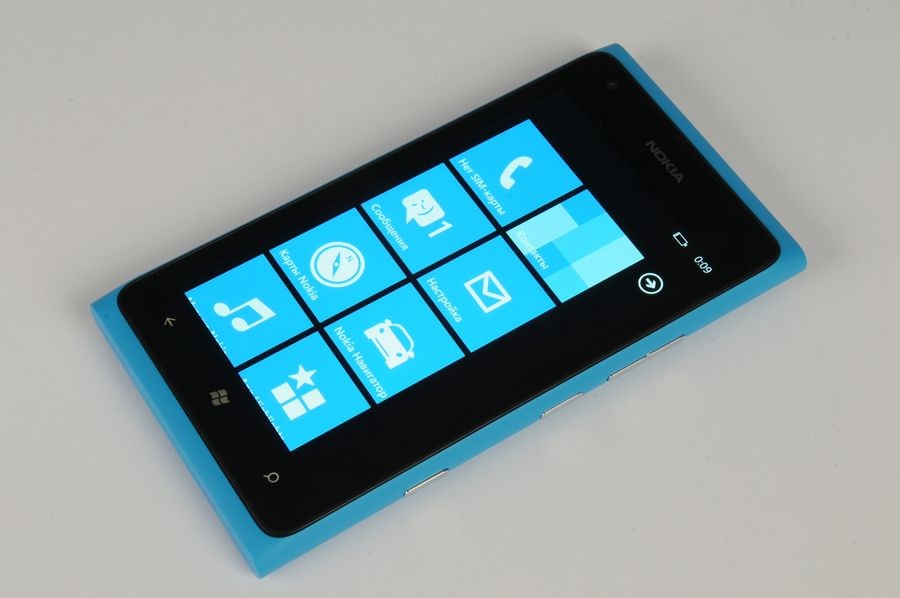

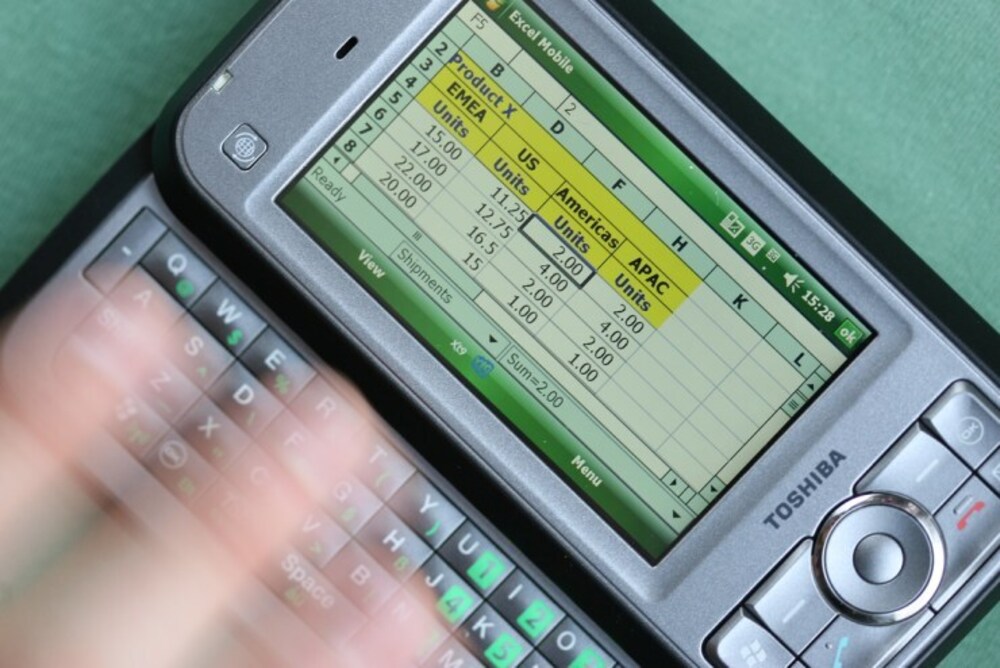
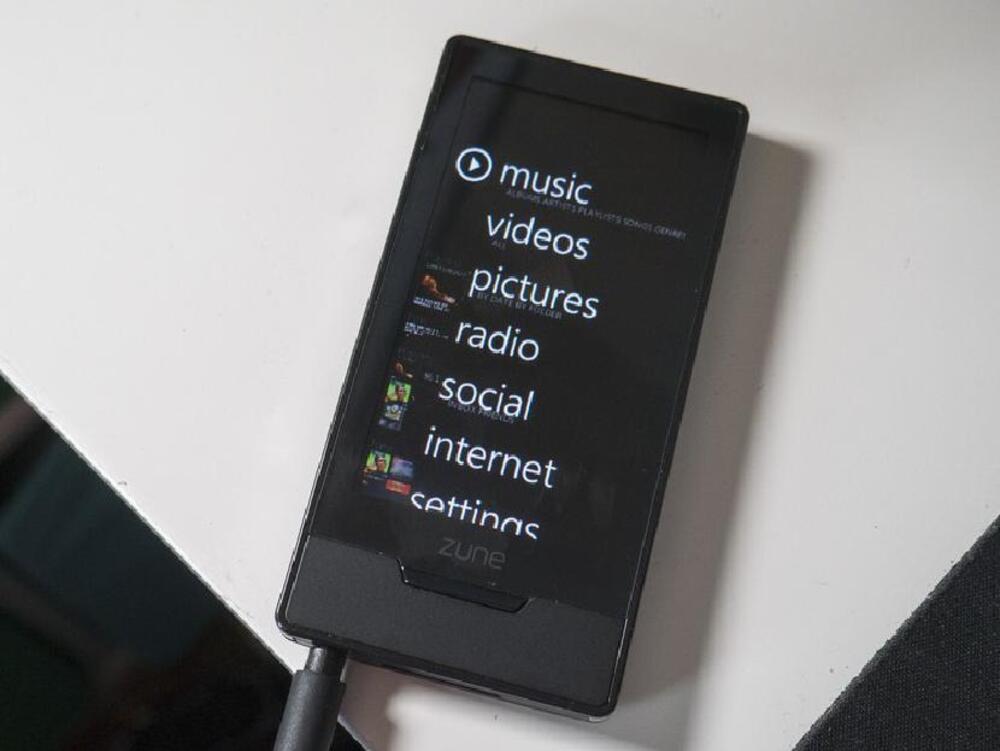
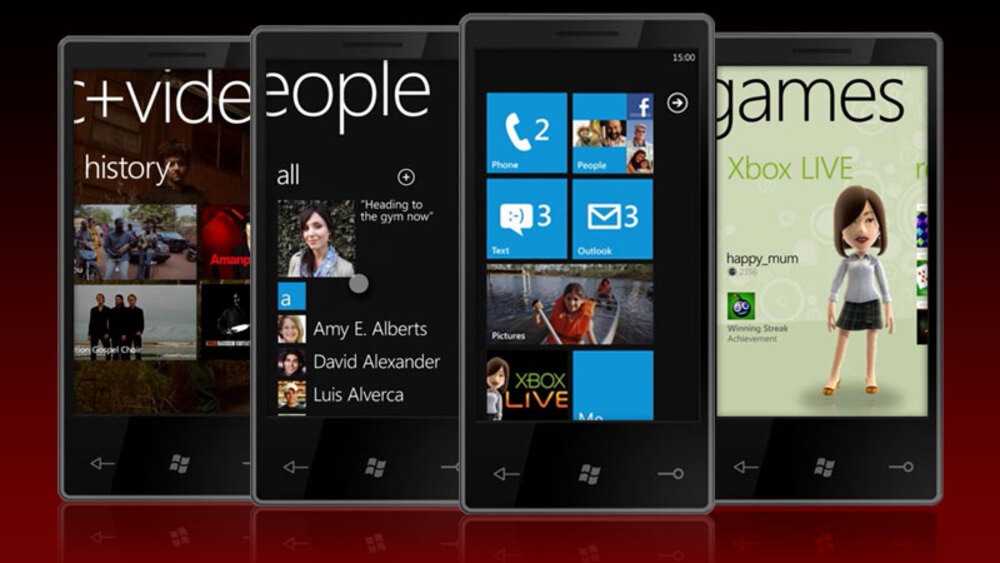
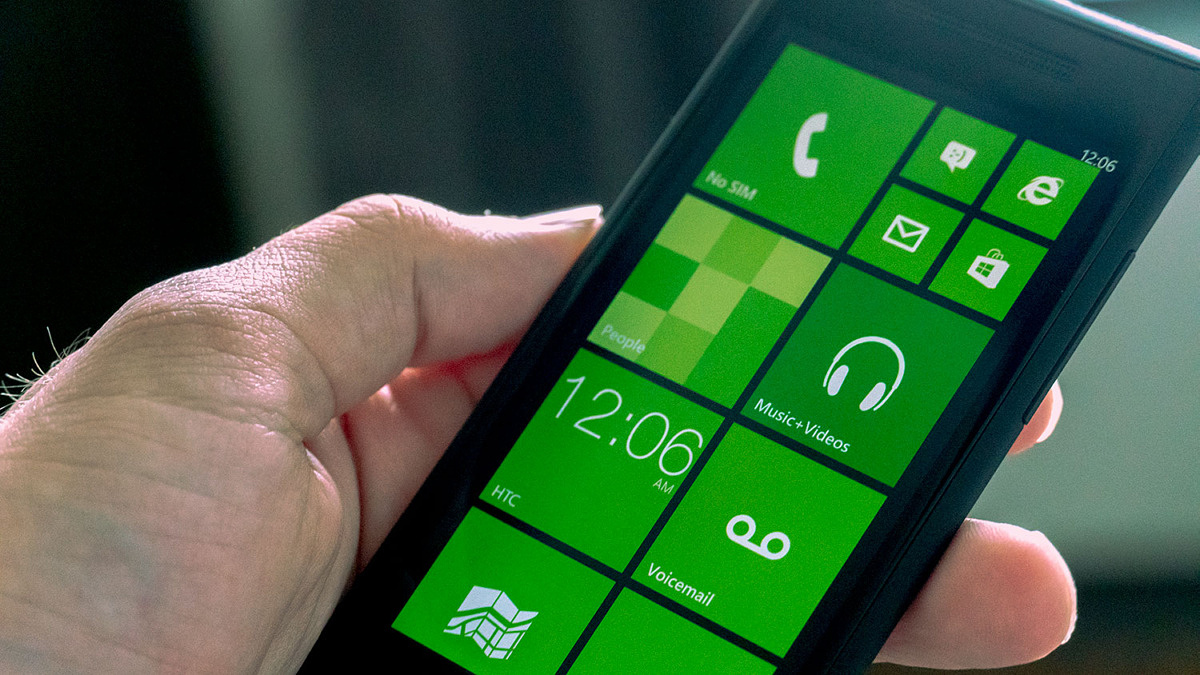

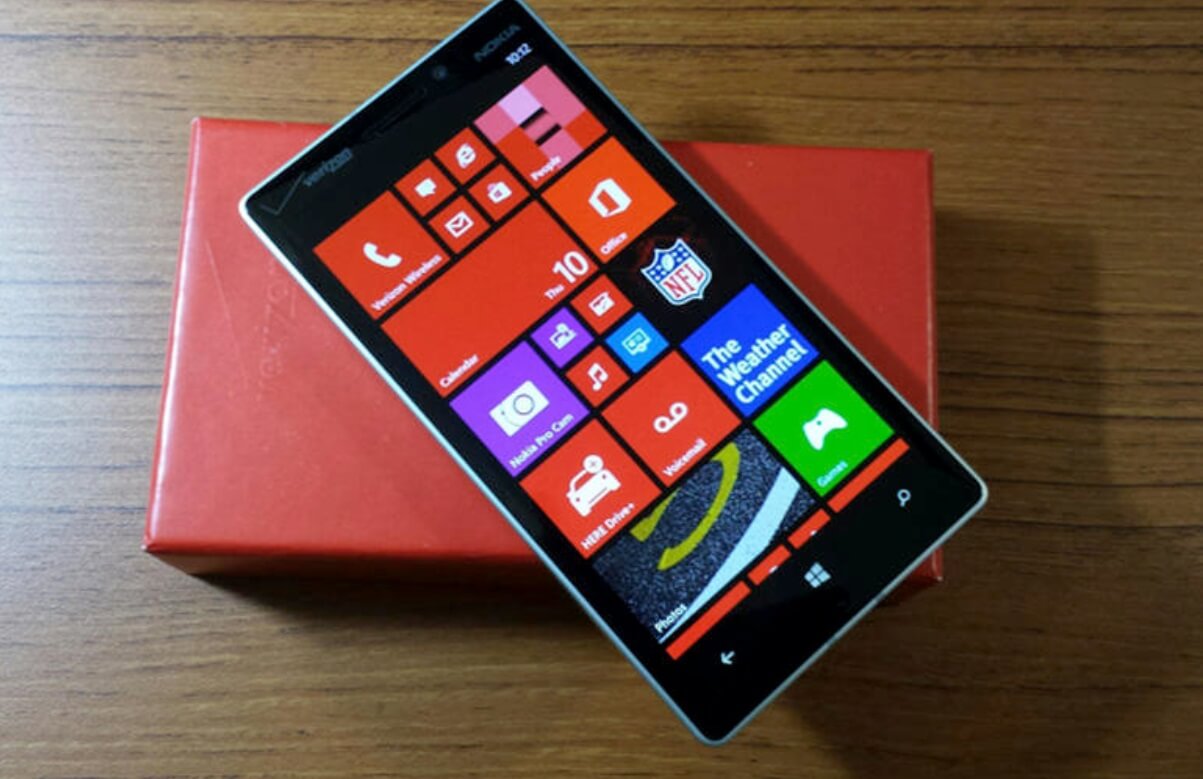
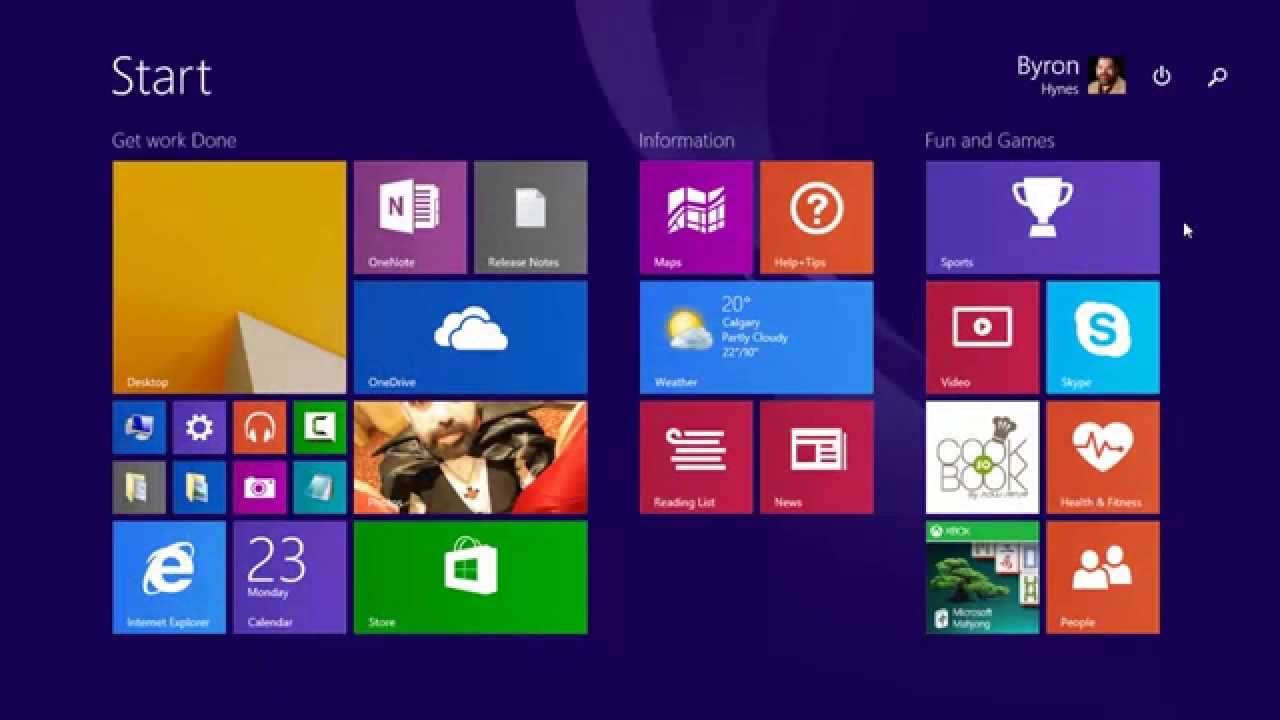
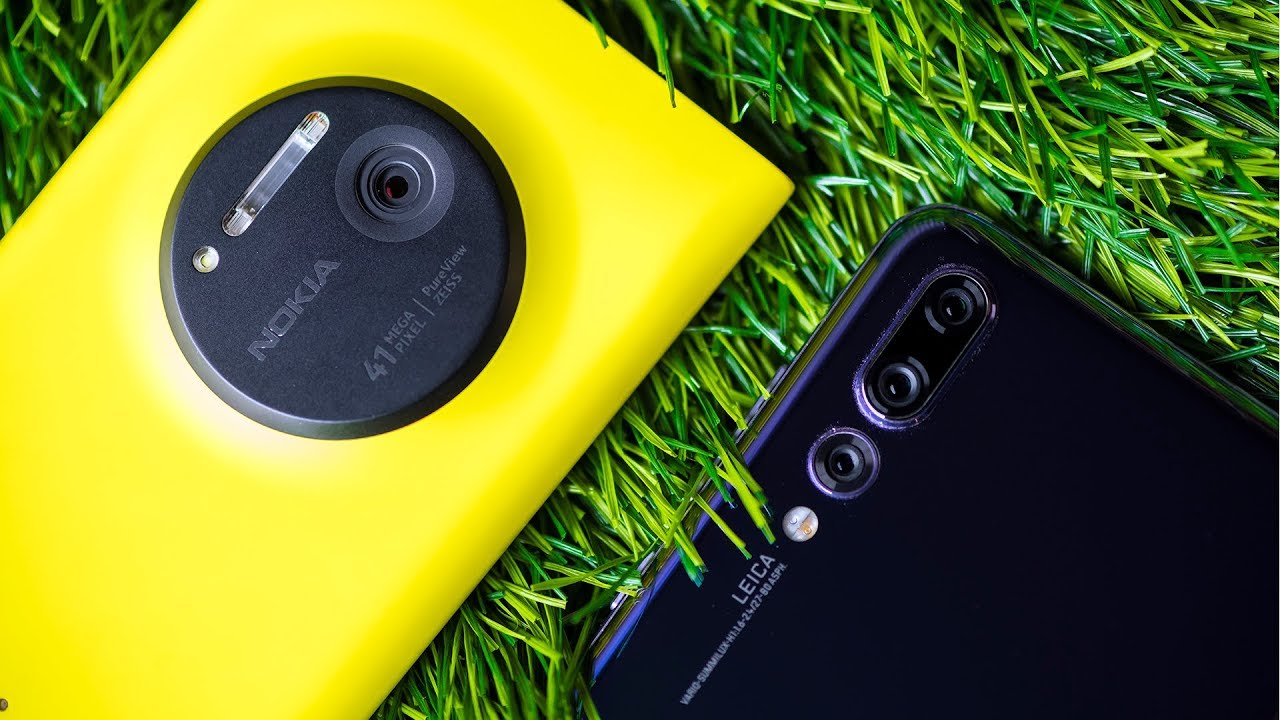
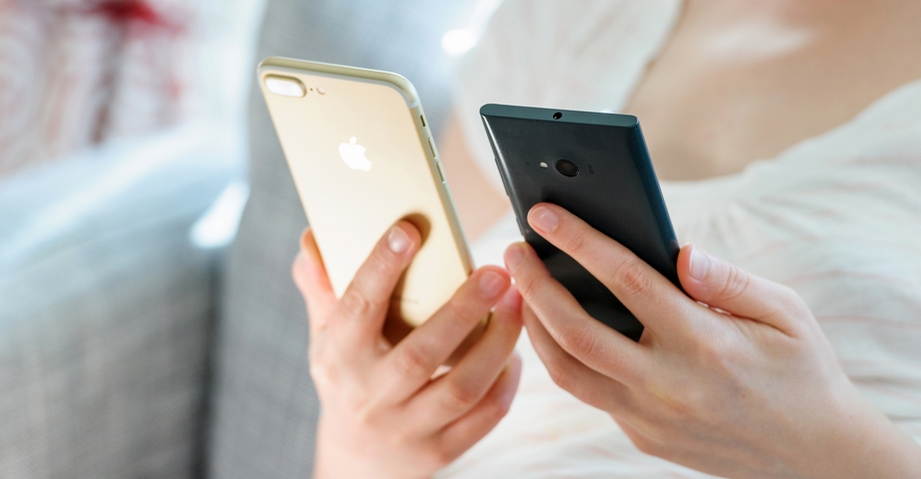
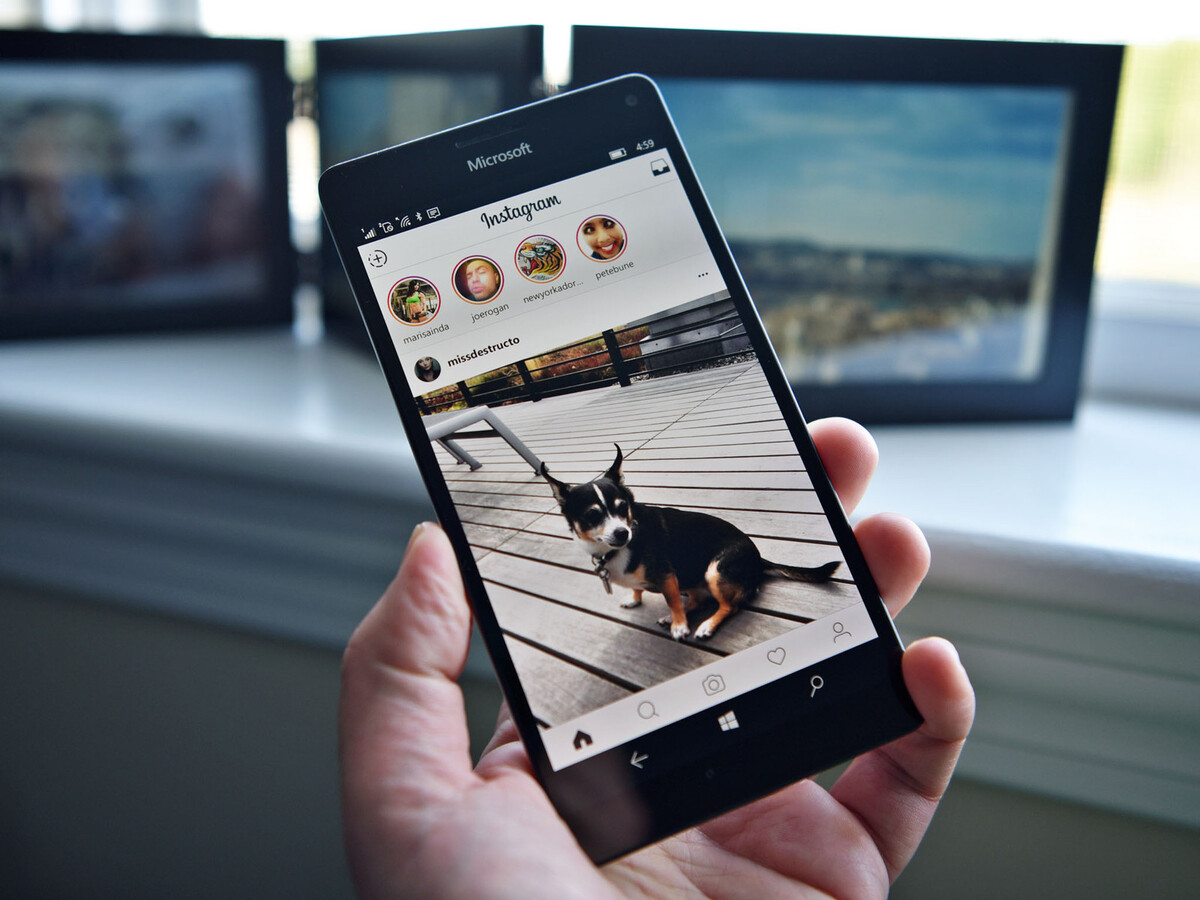

 with Microsoft Account; sign in will persist across devices + apps with permissions prompt
with Microsoft Account; sign in will persist across devices + apps with permissions prompt